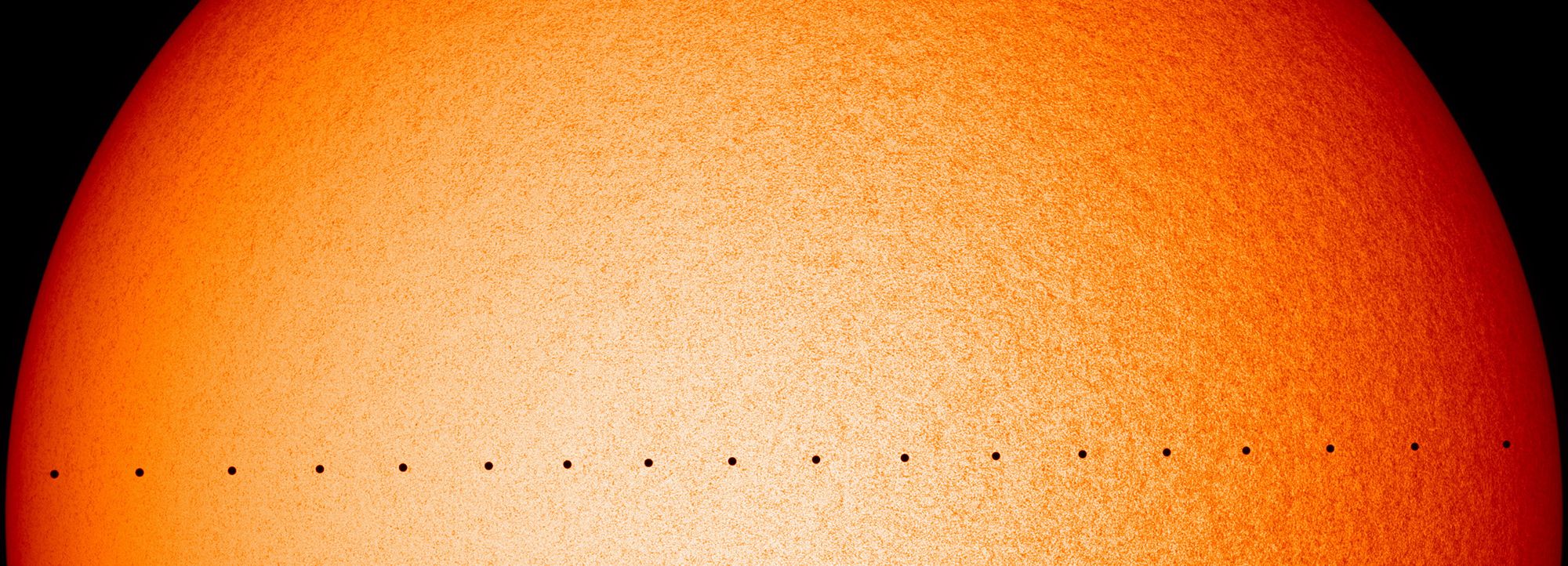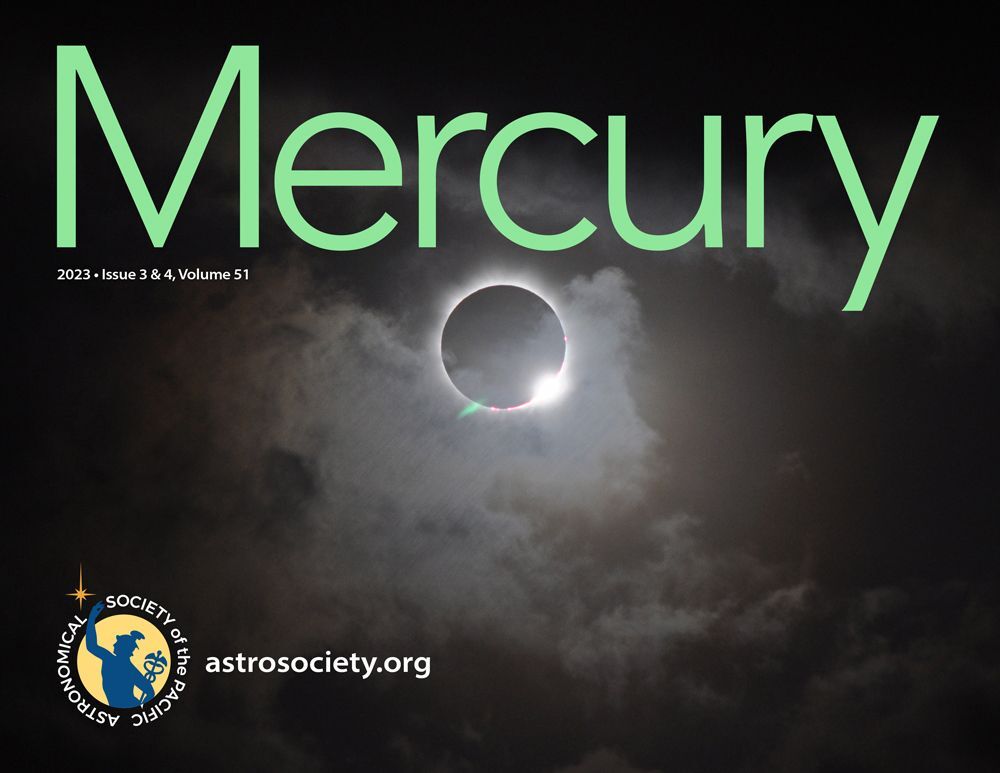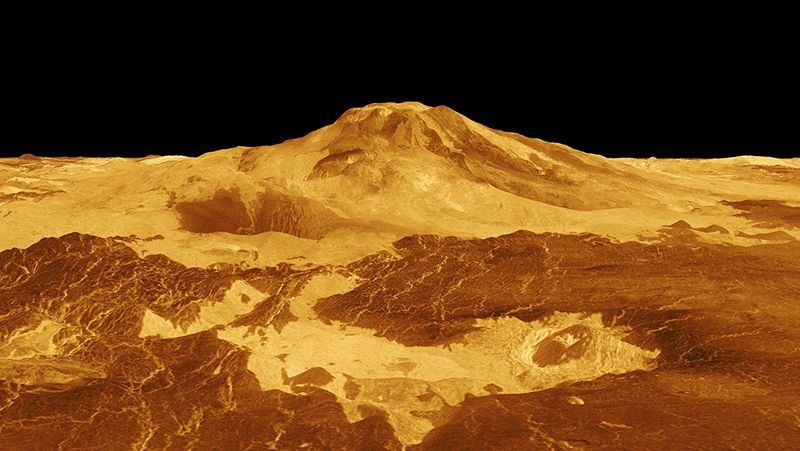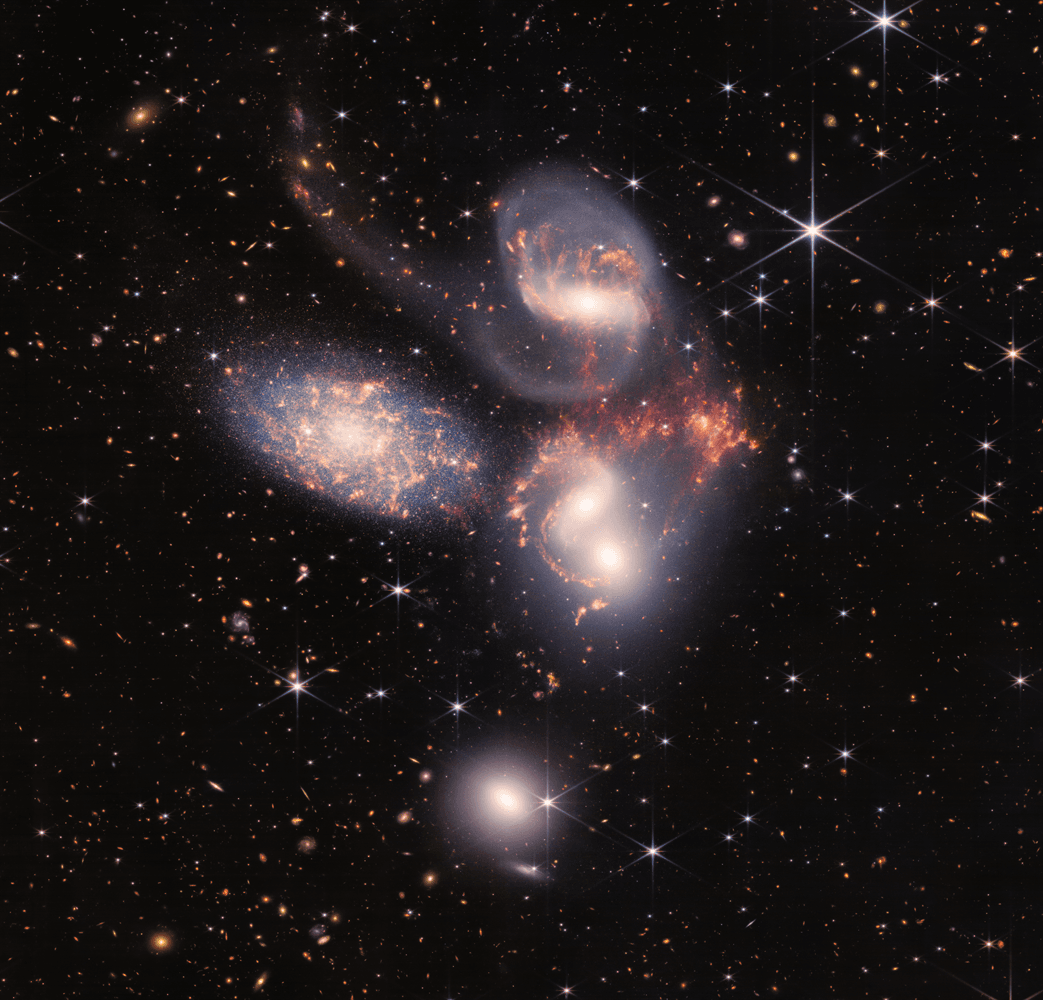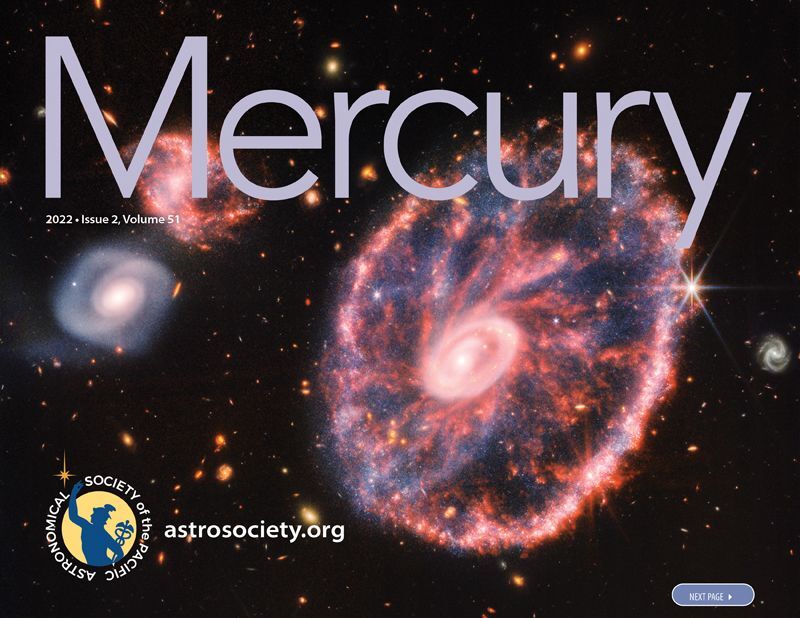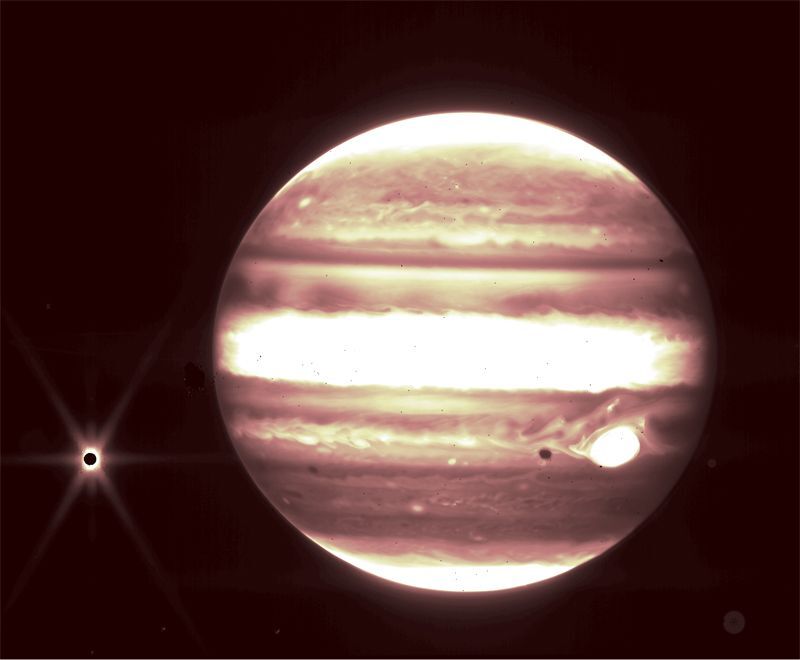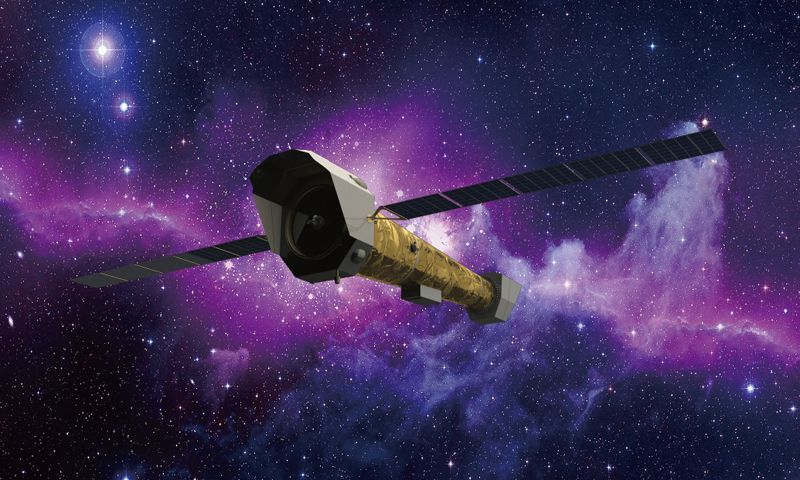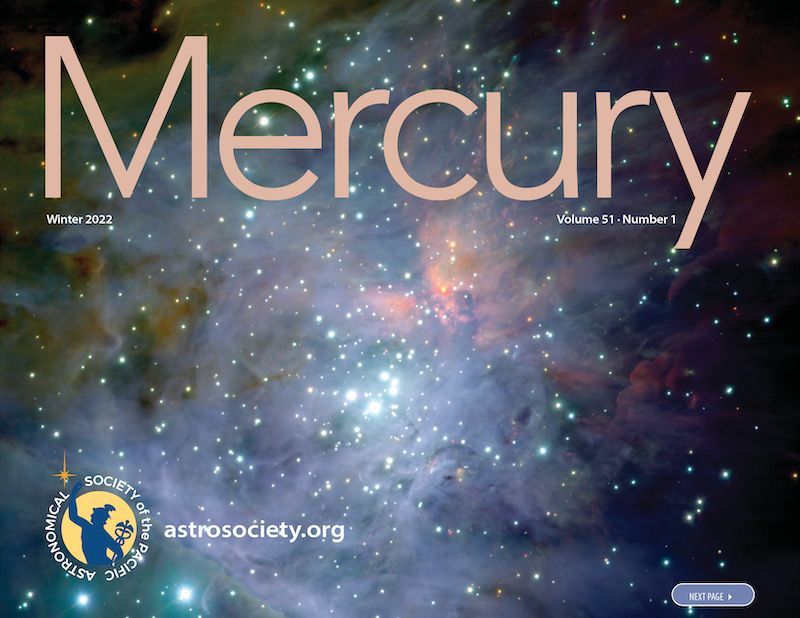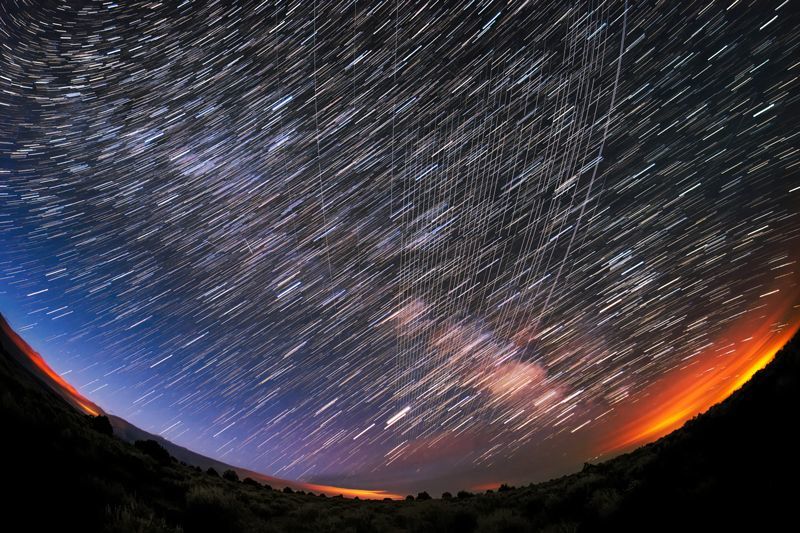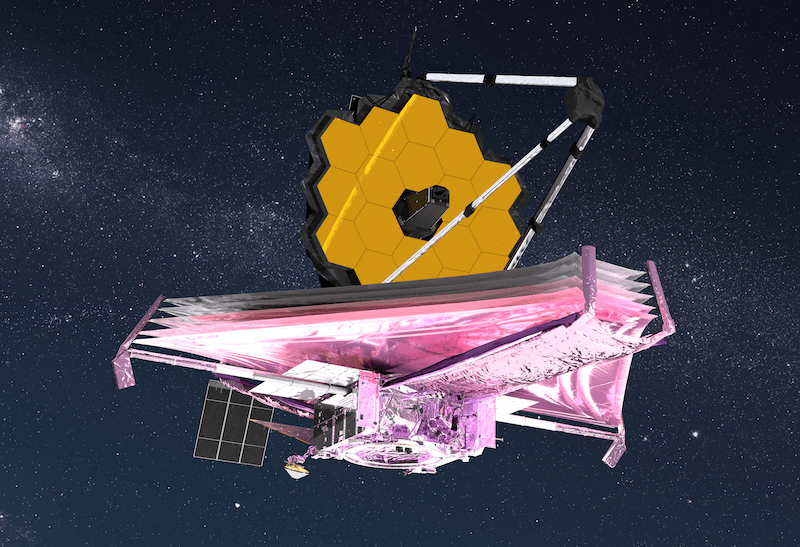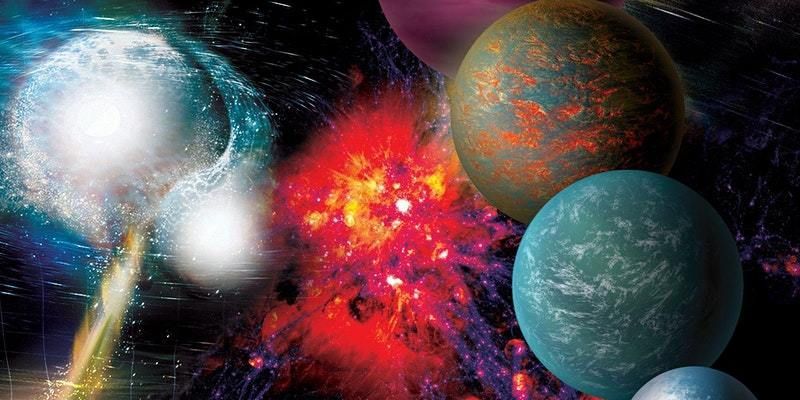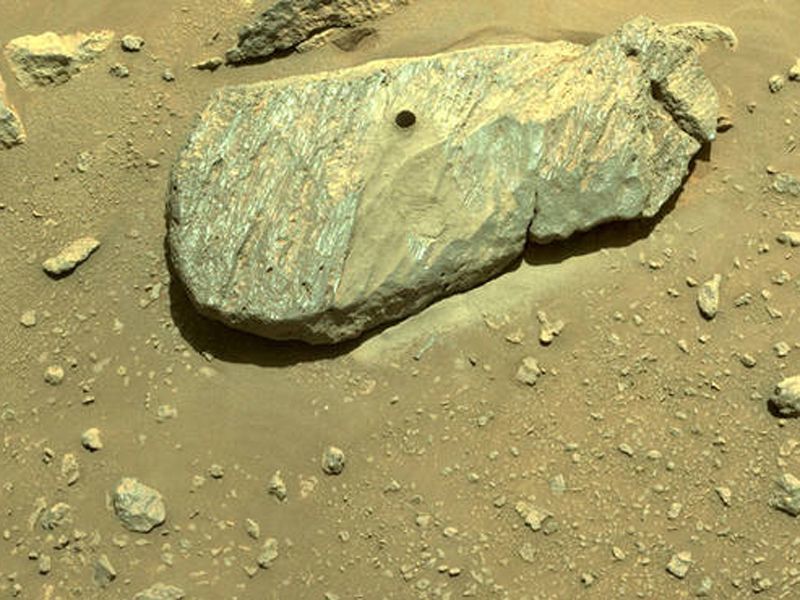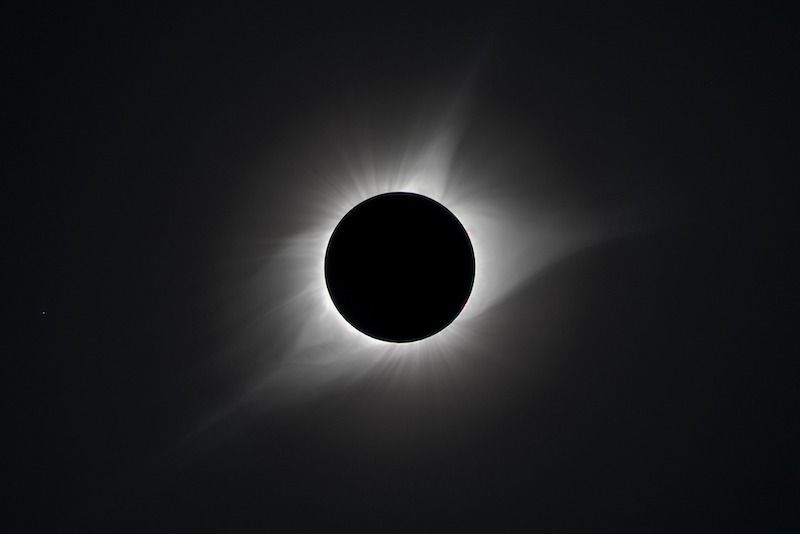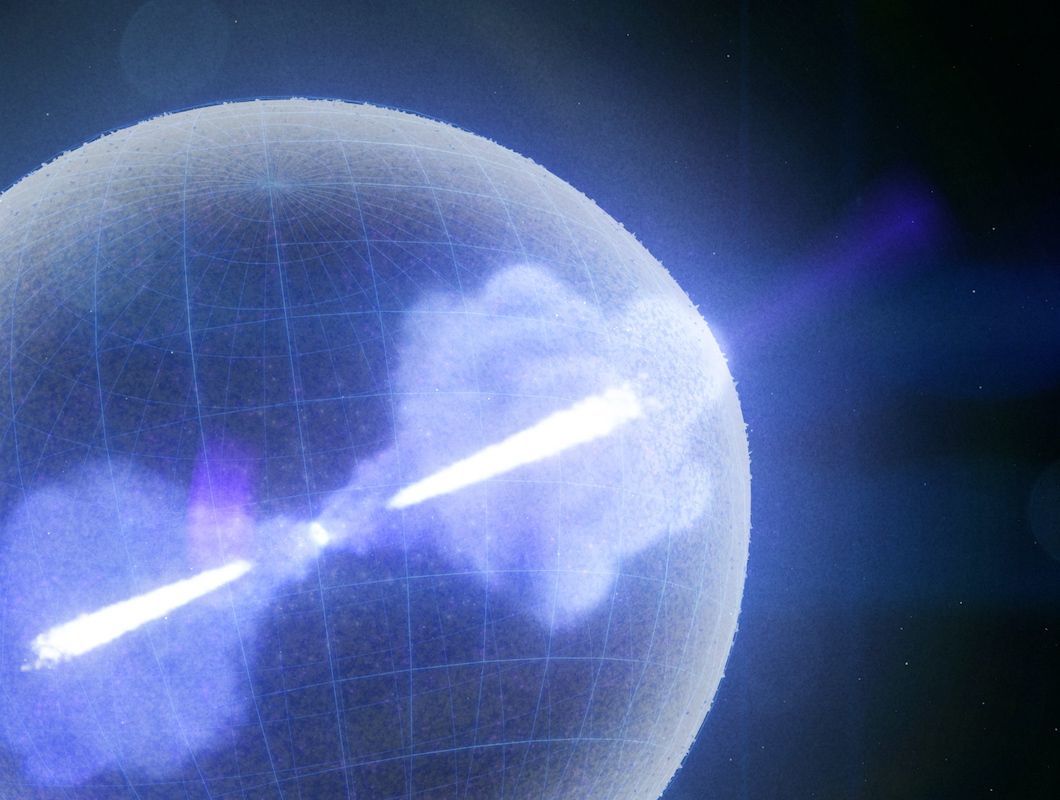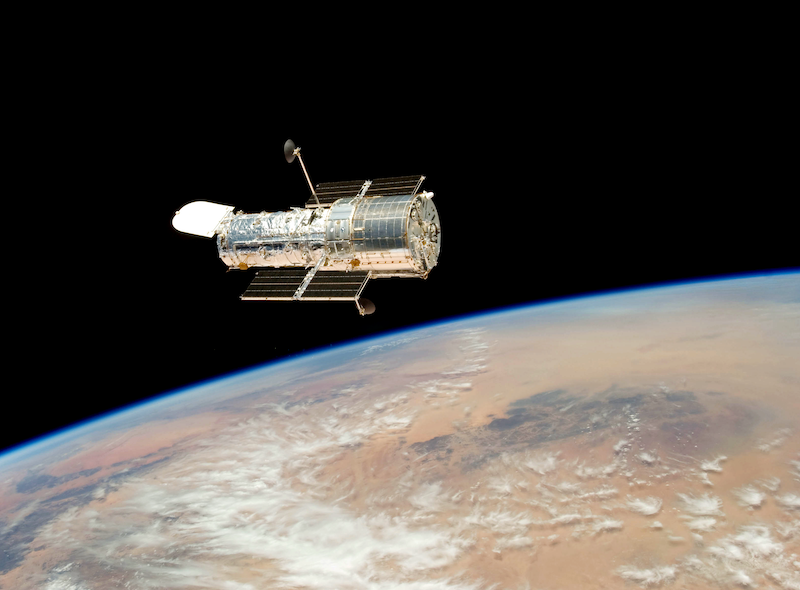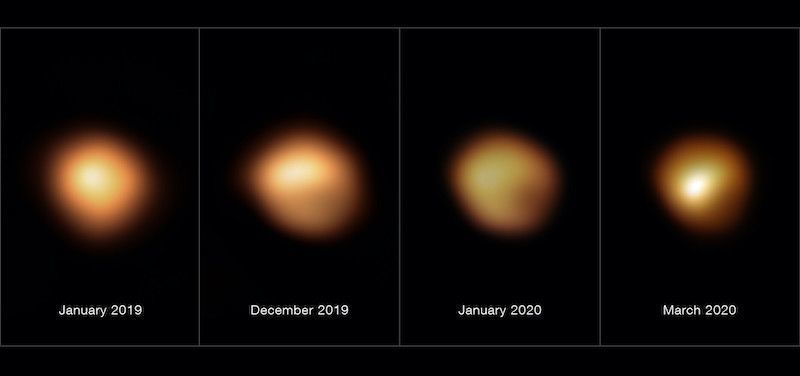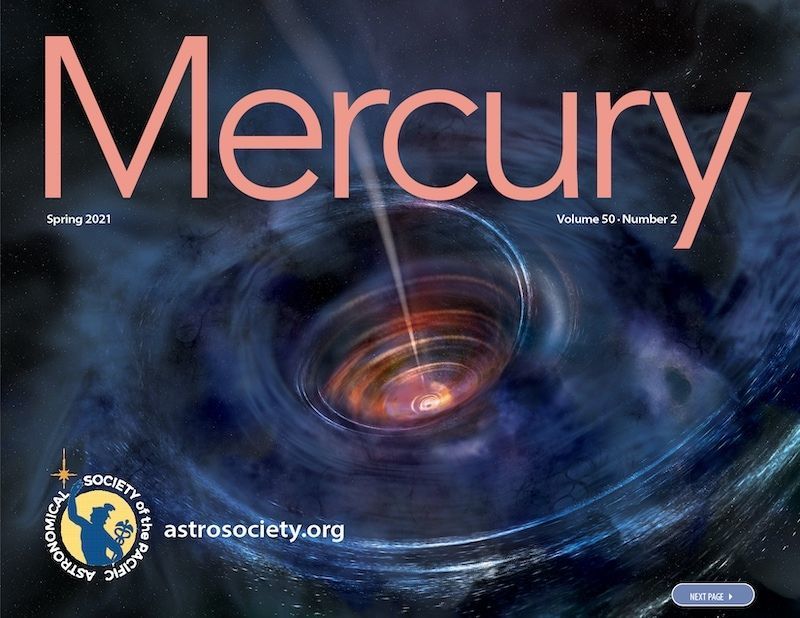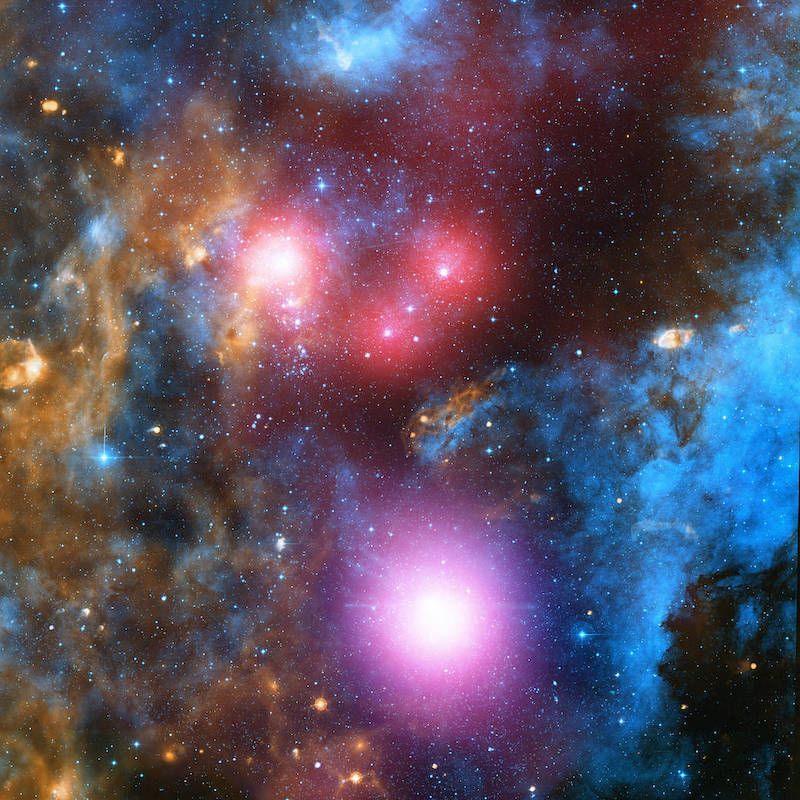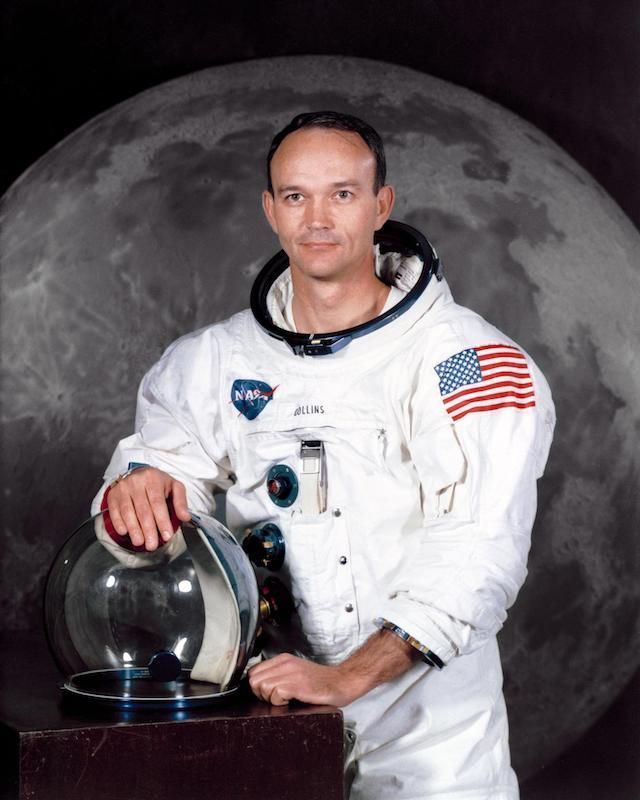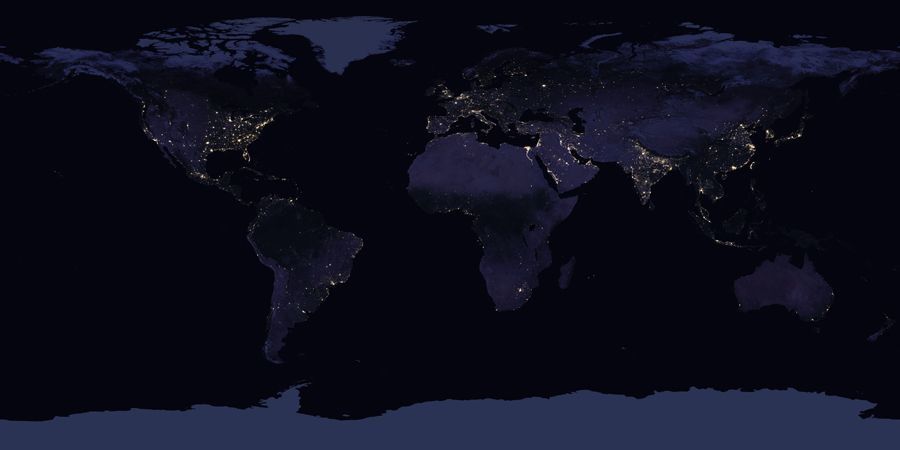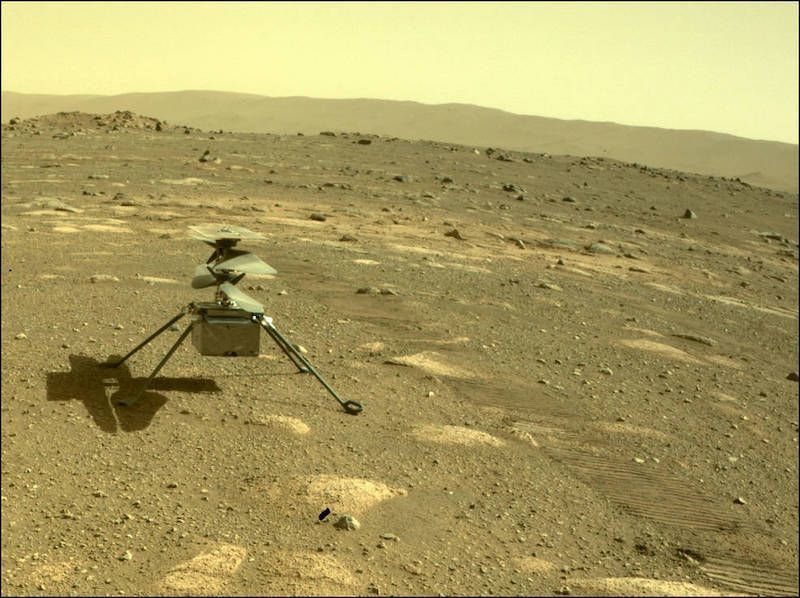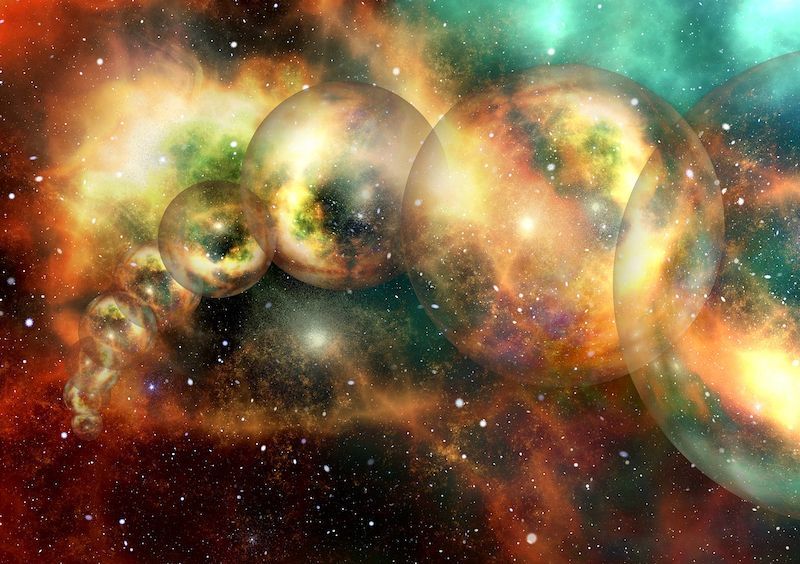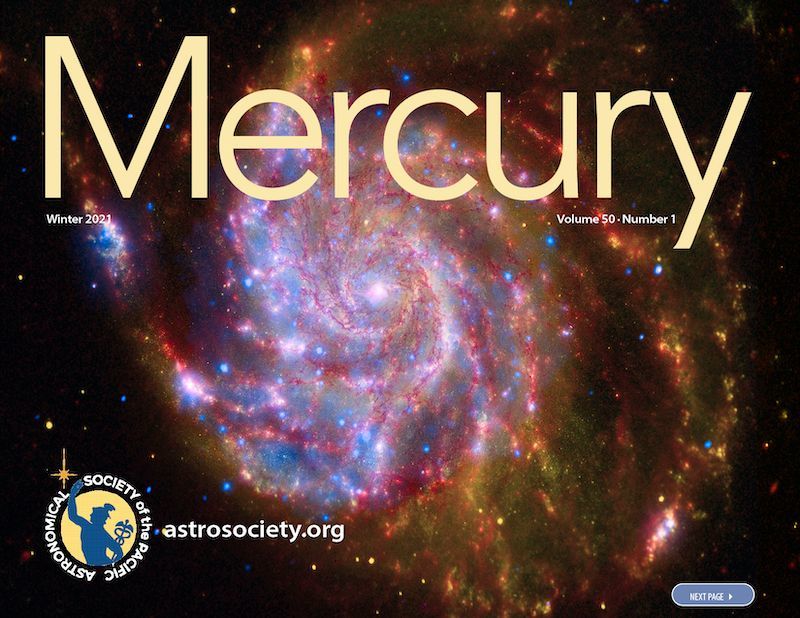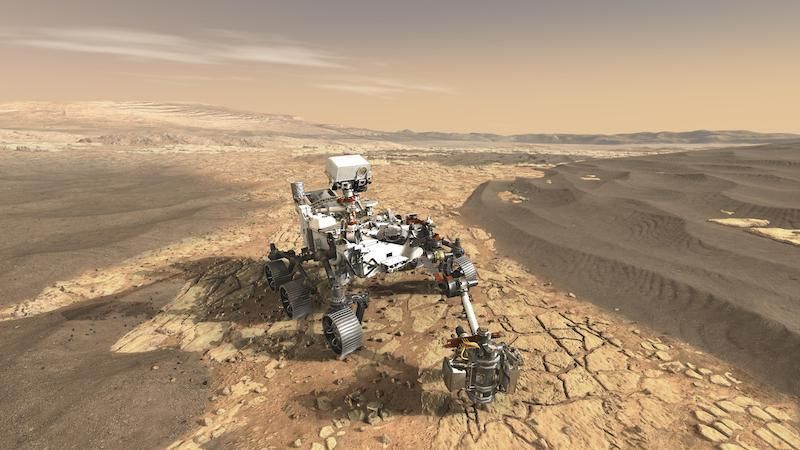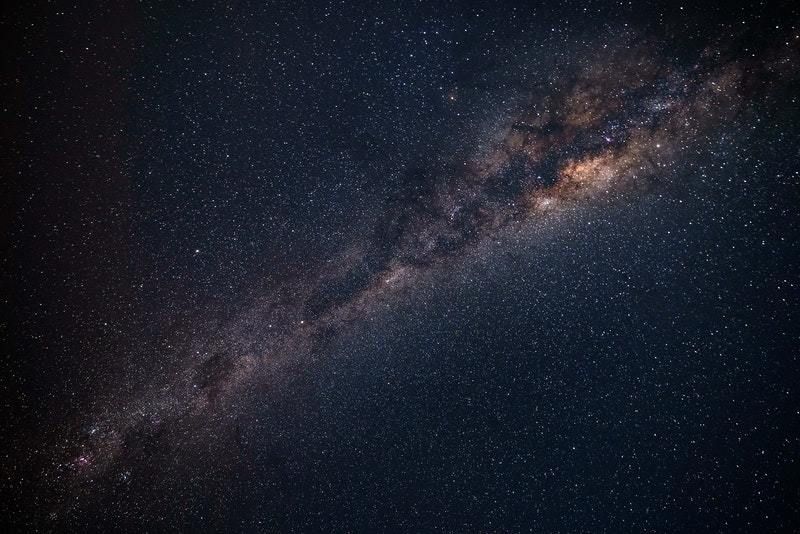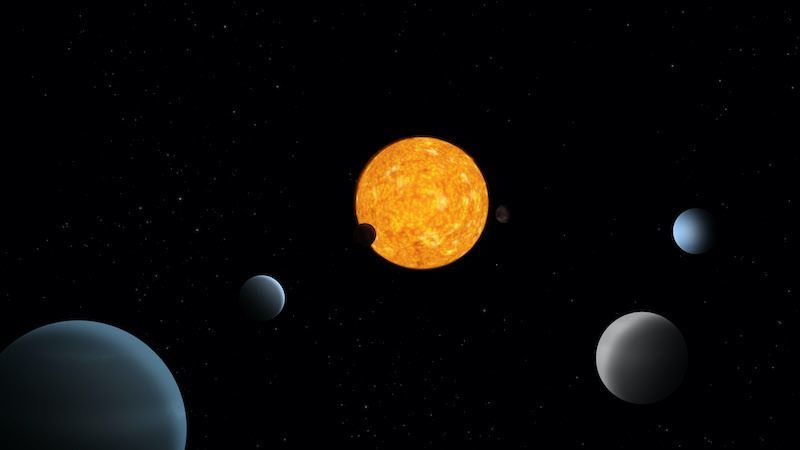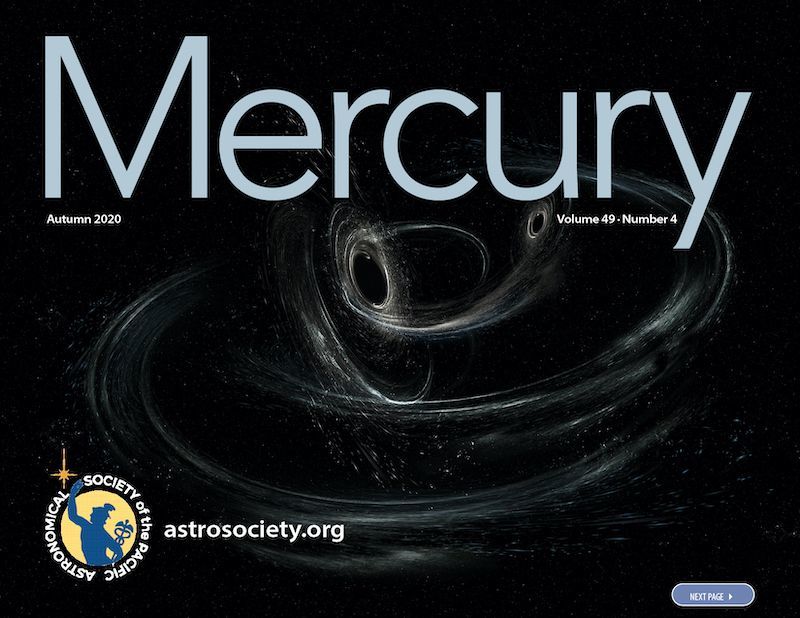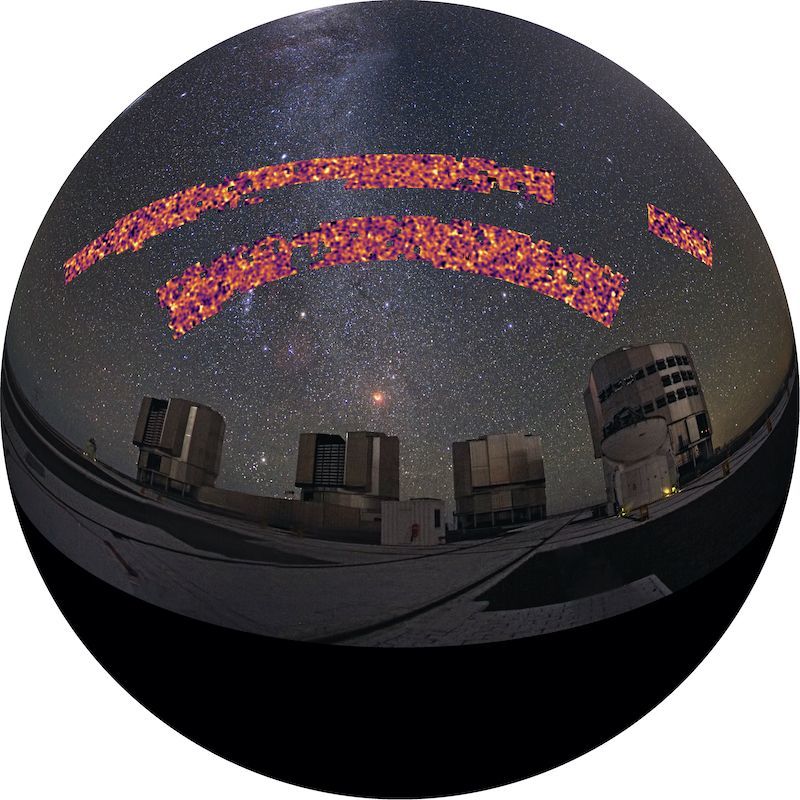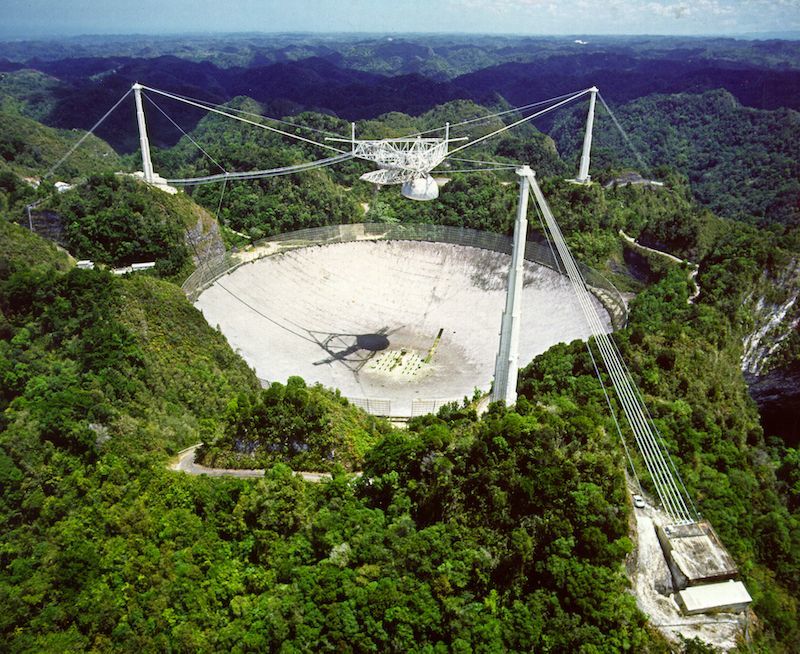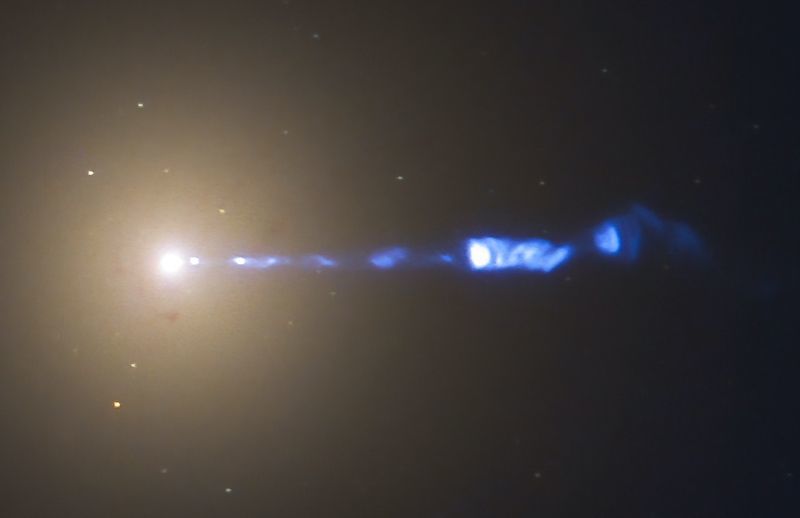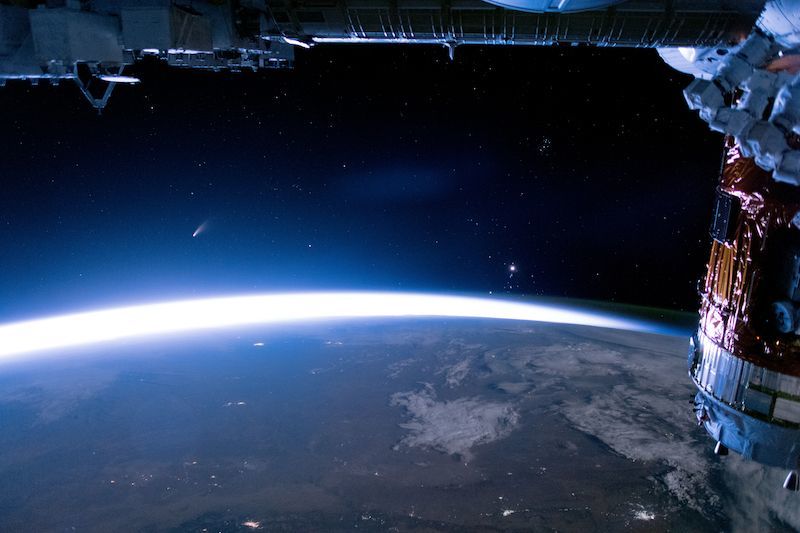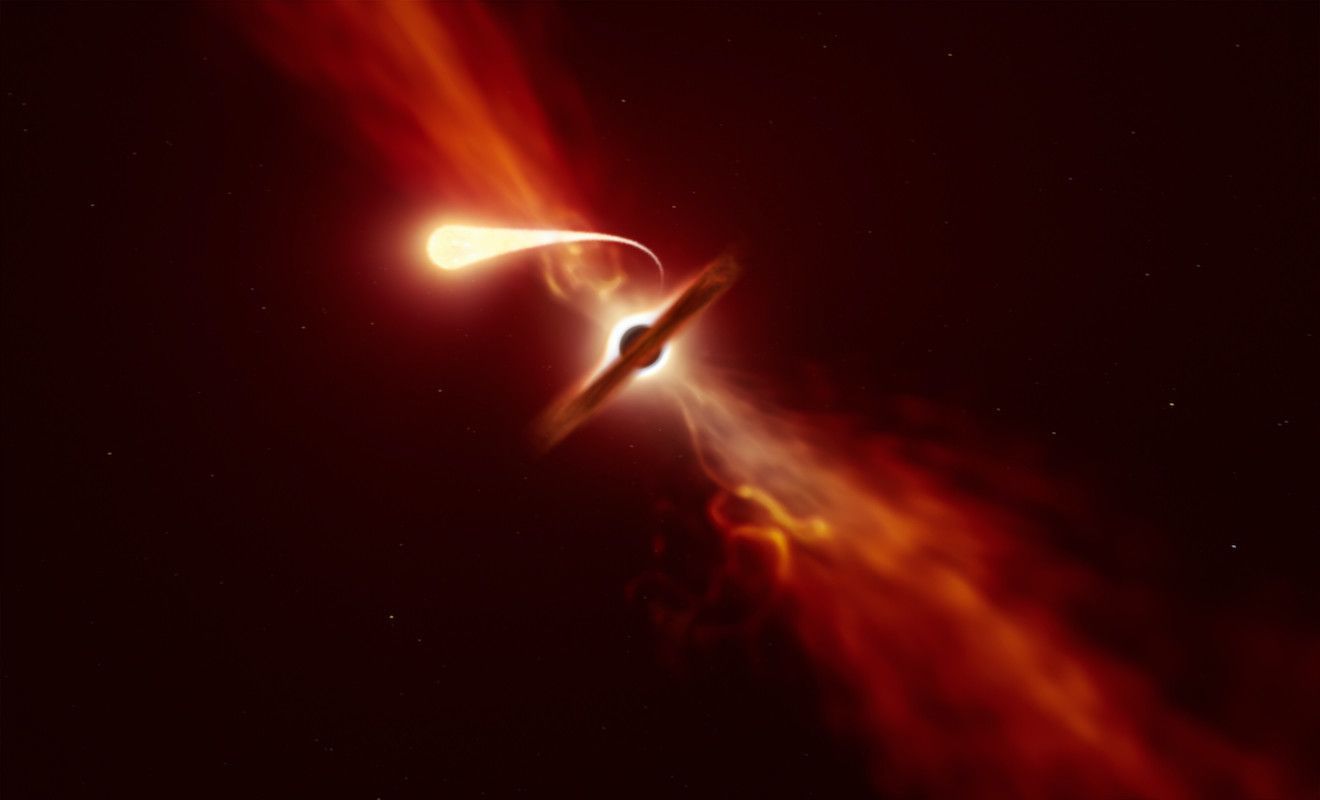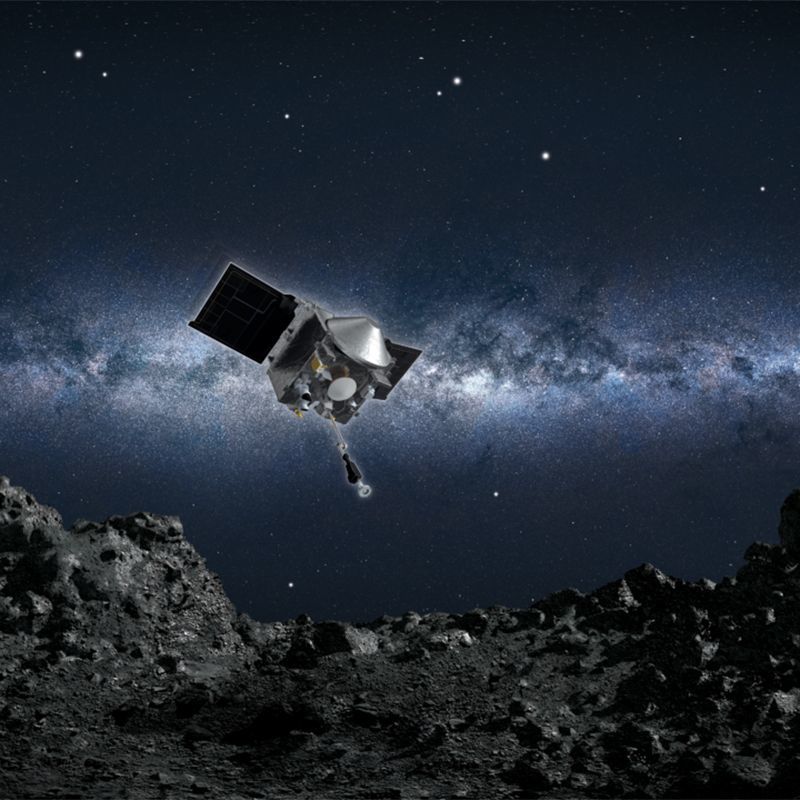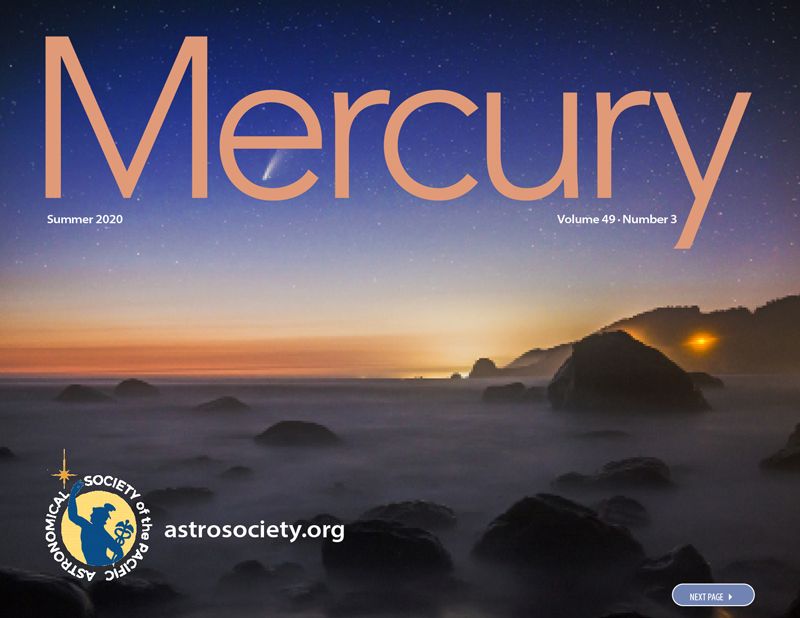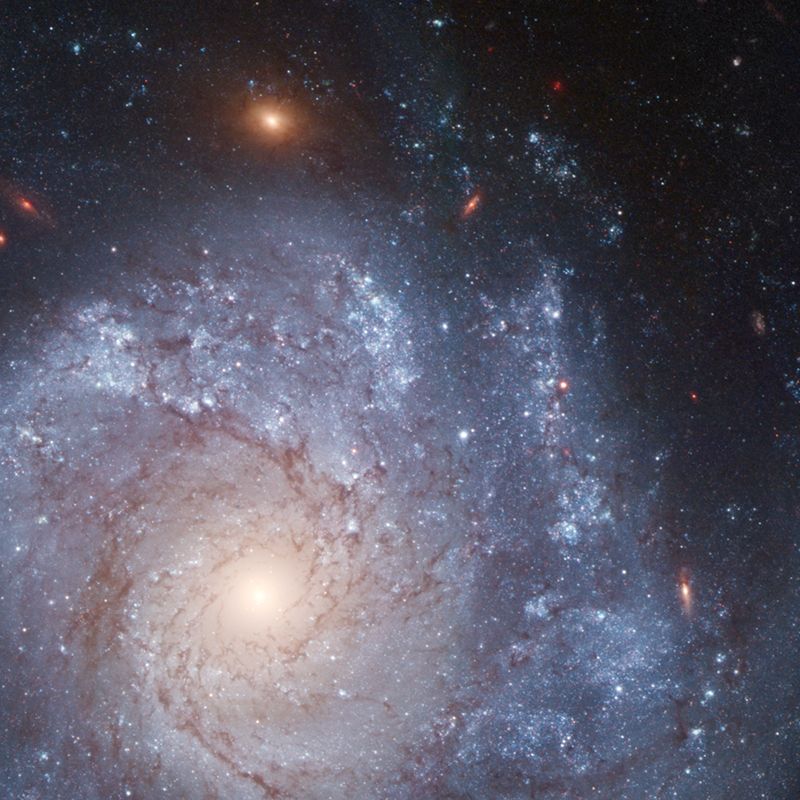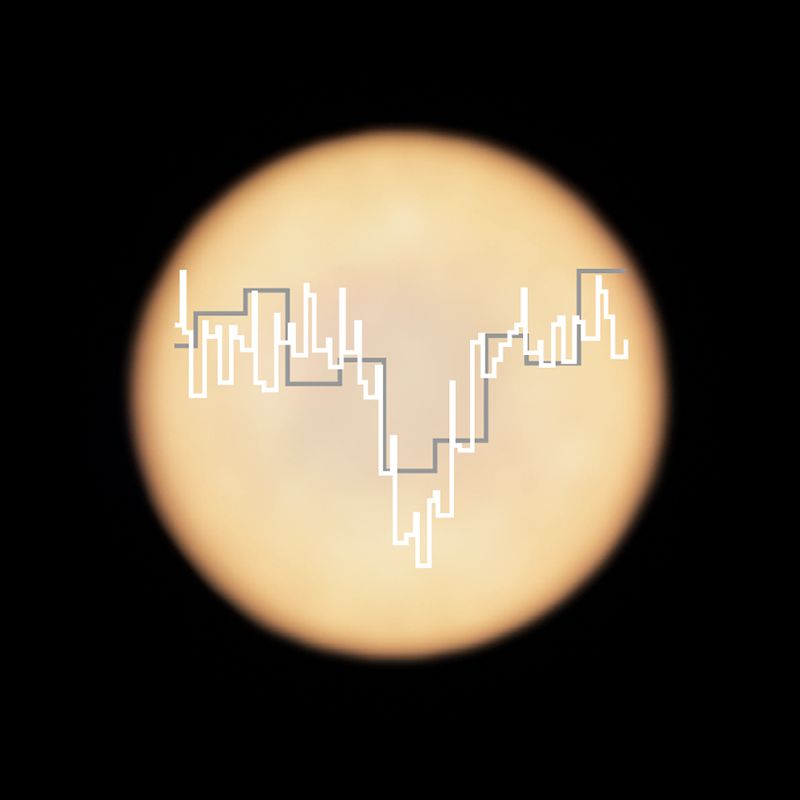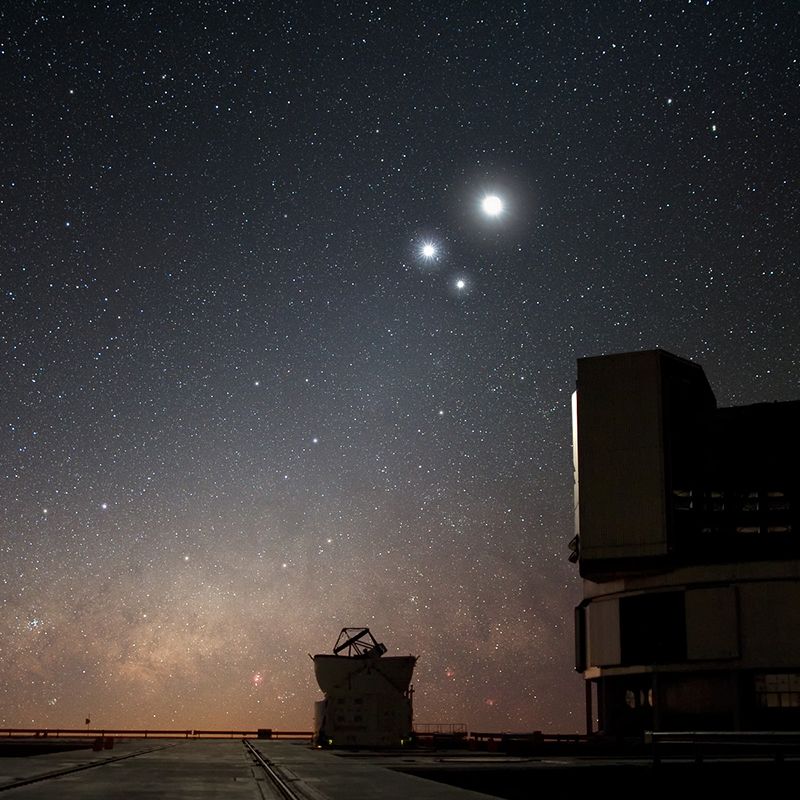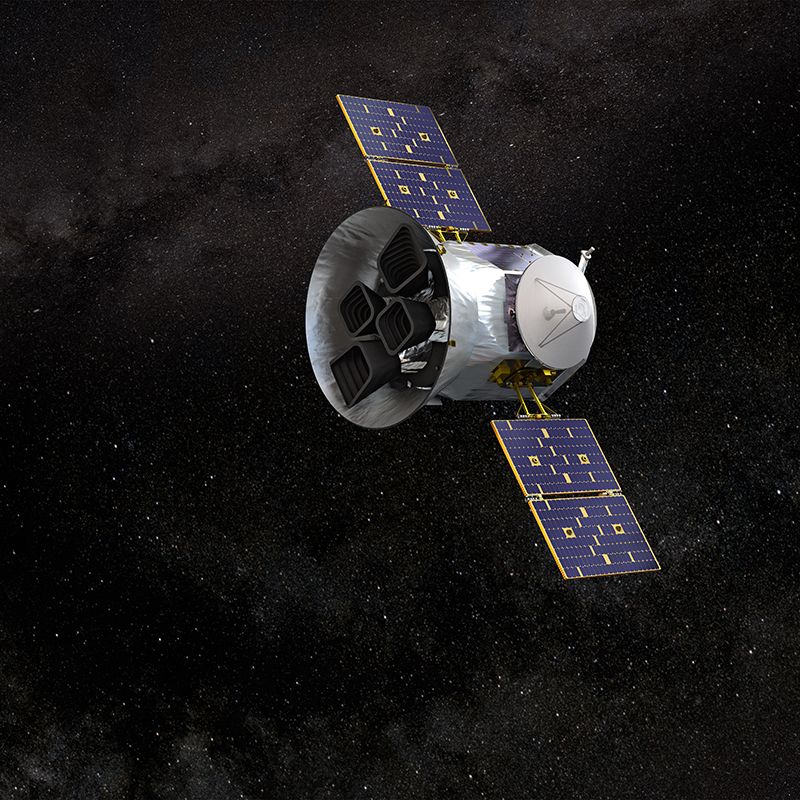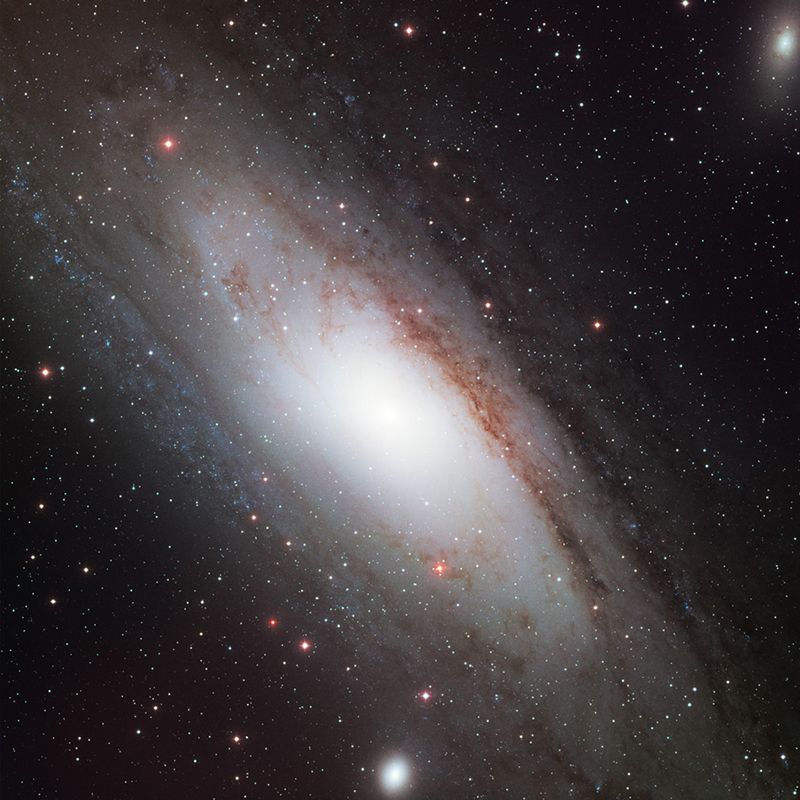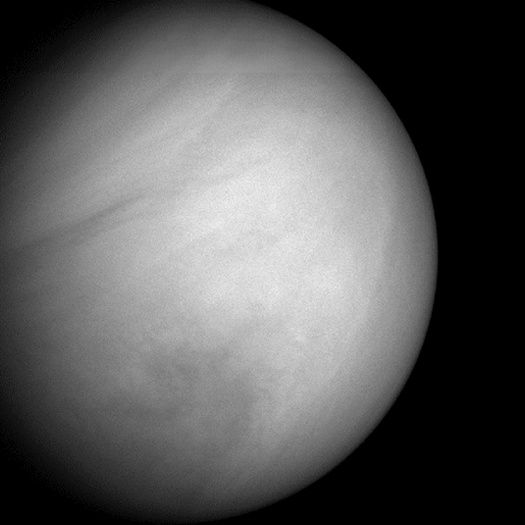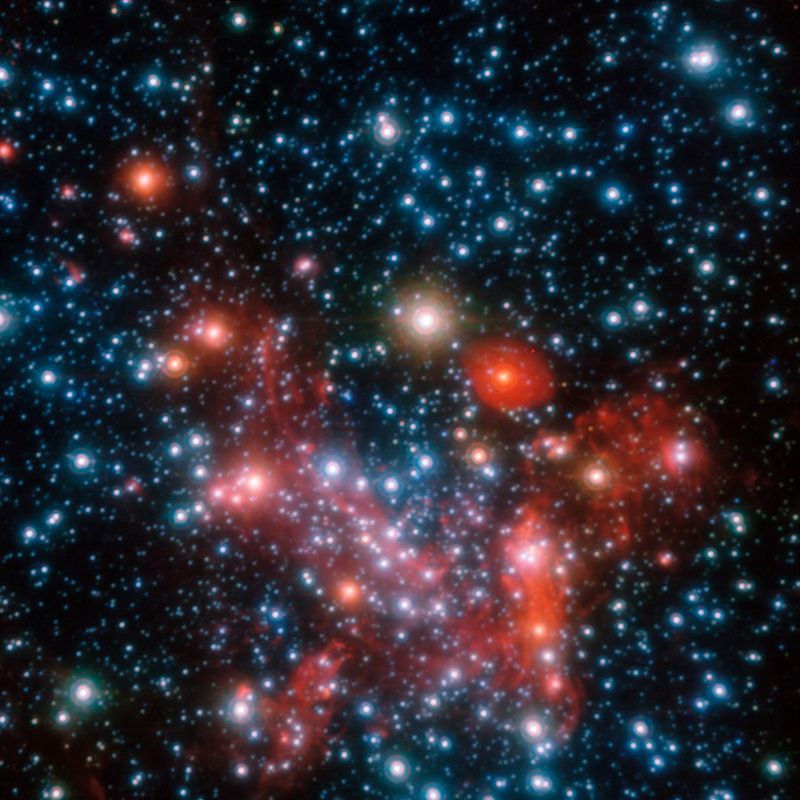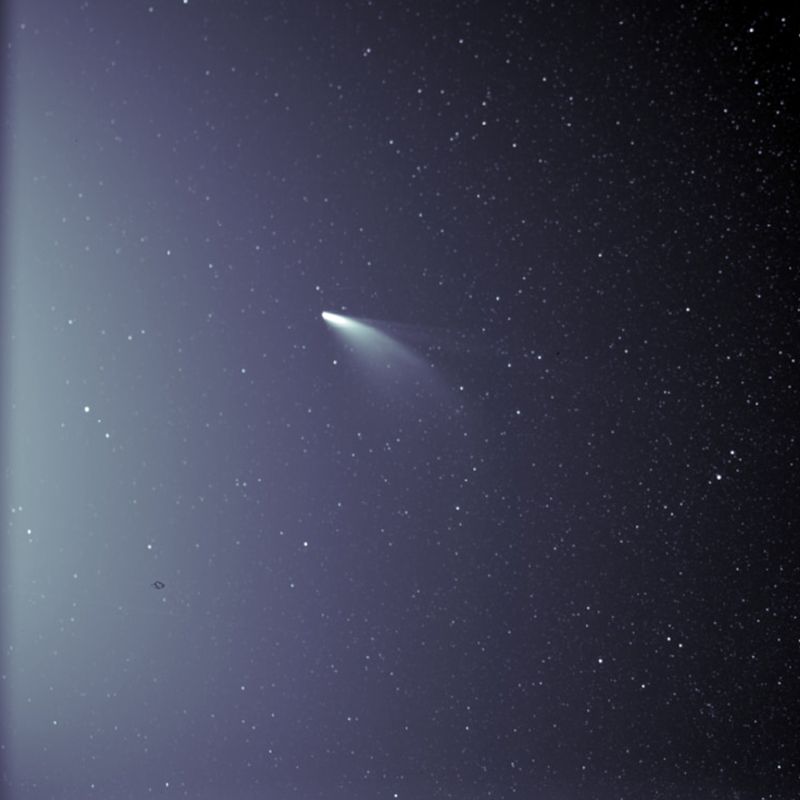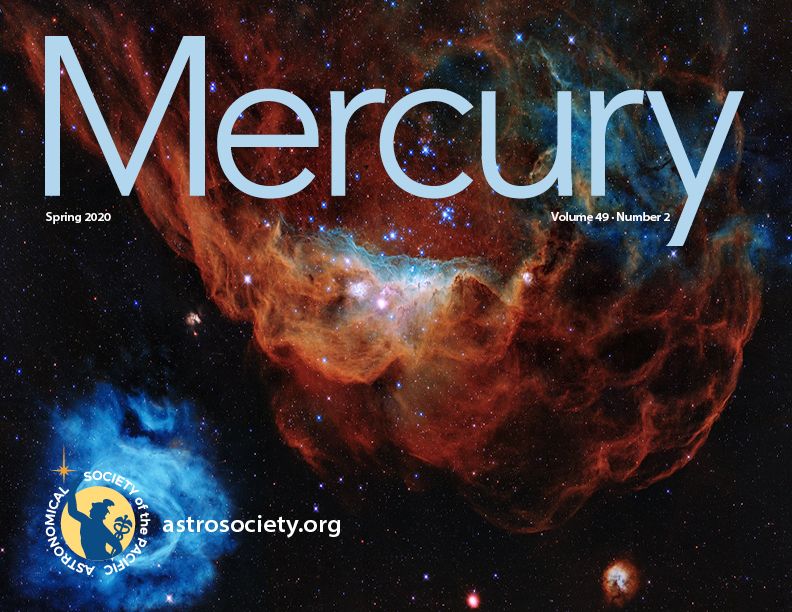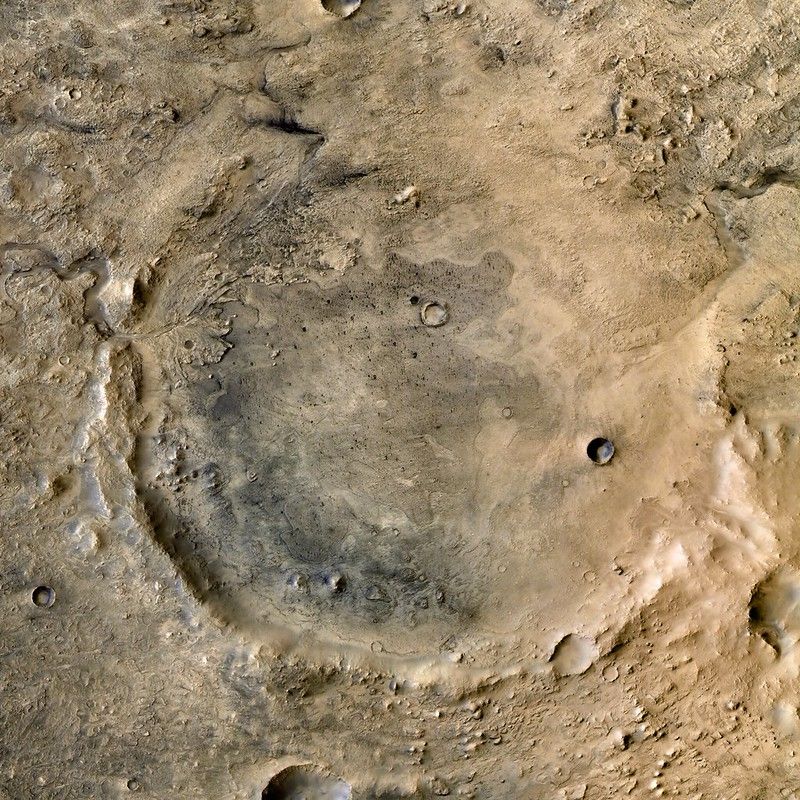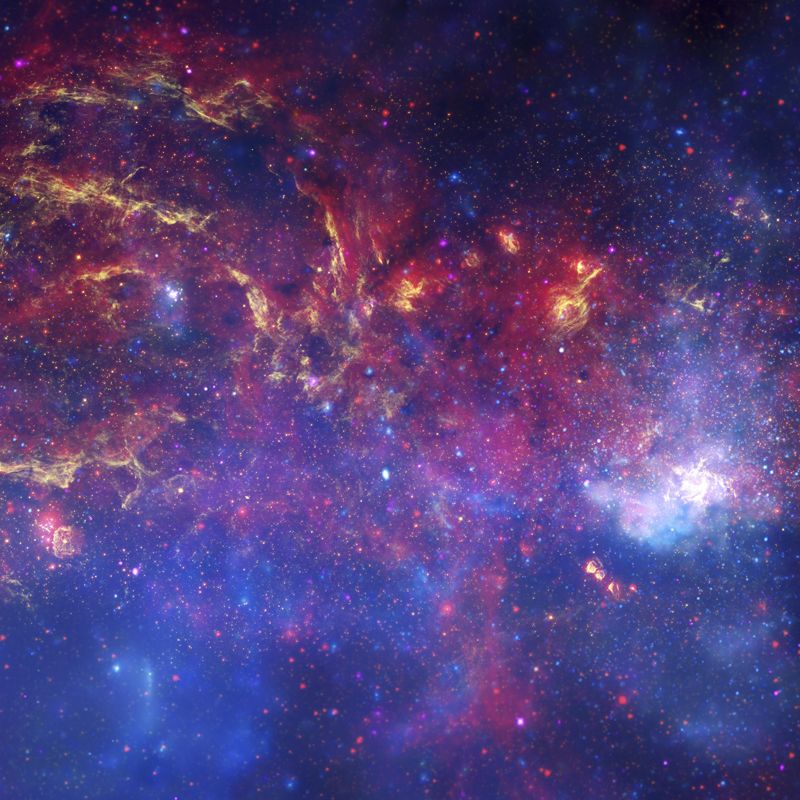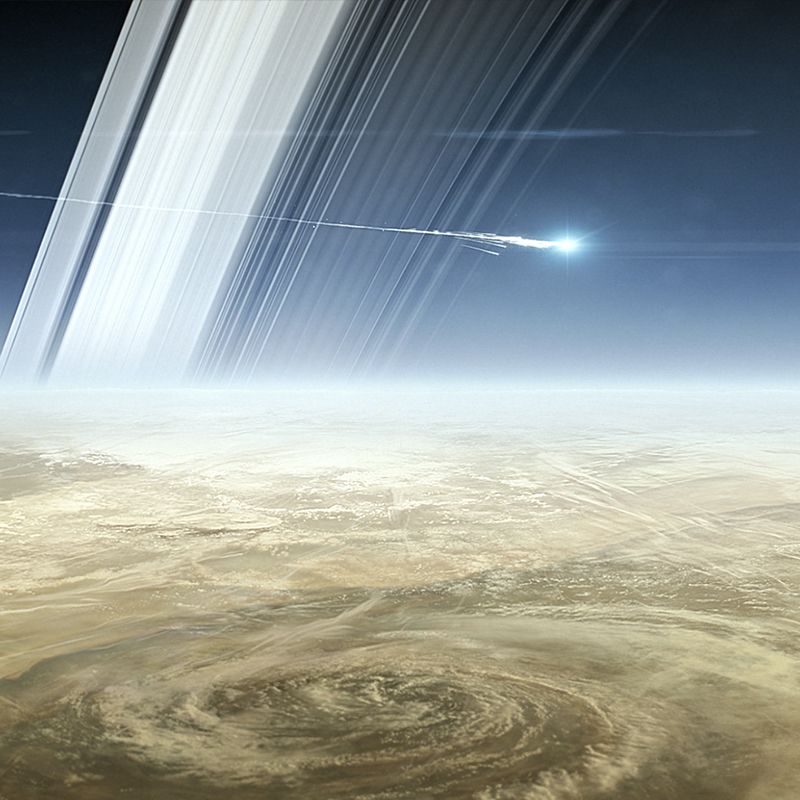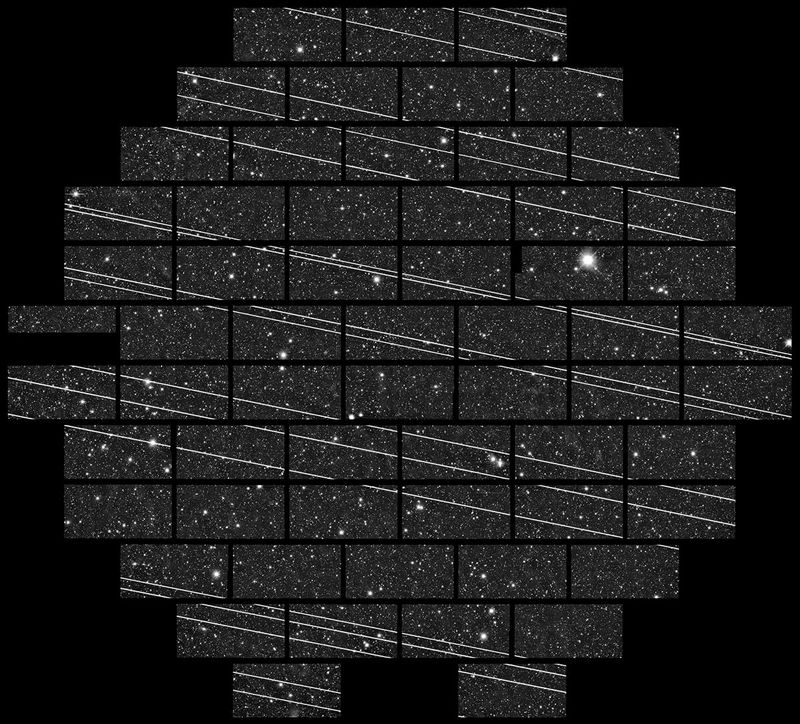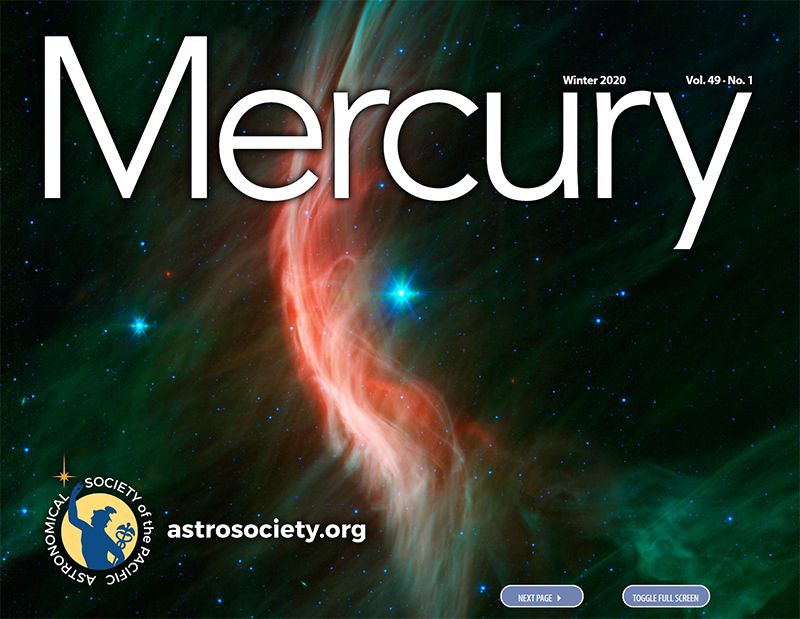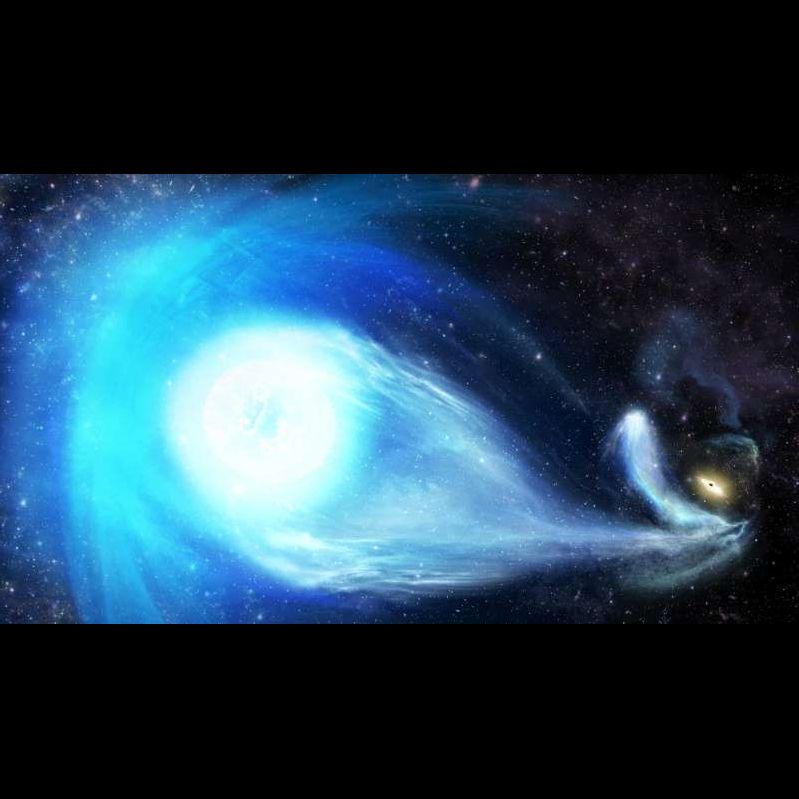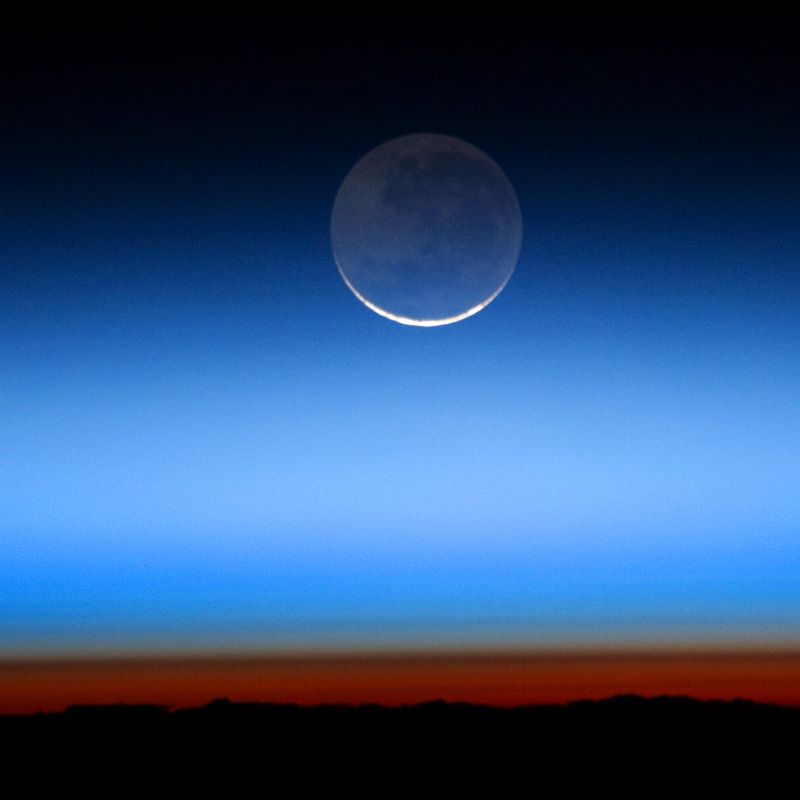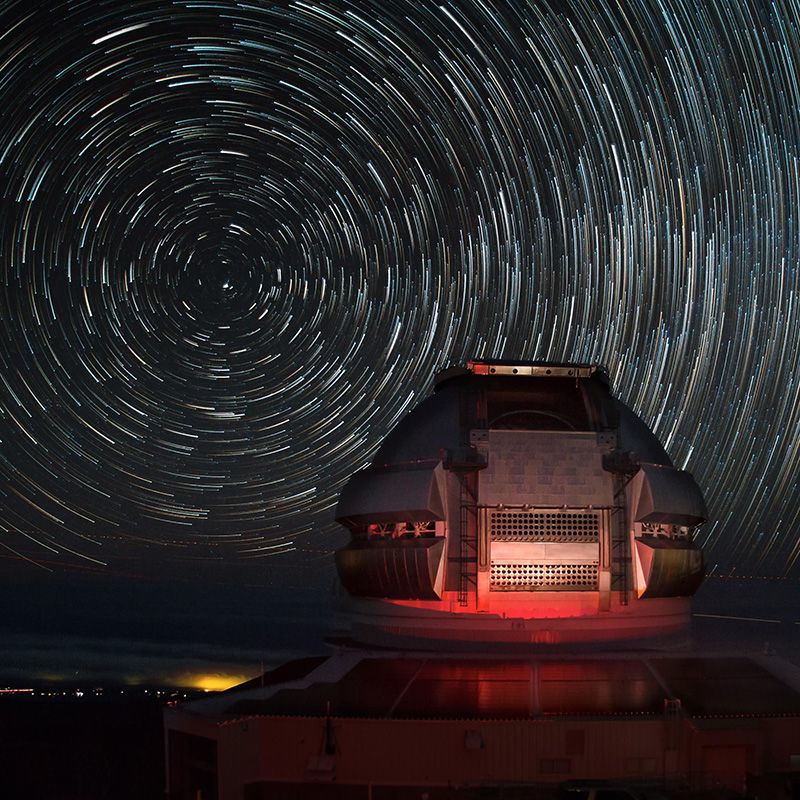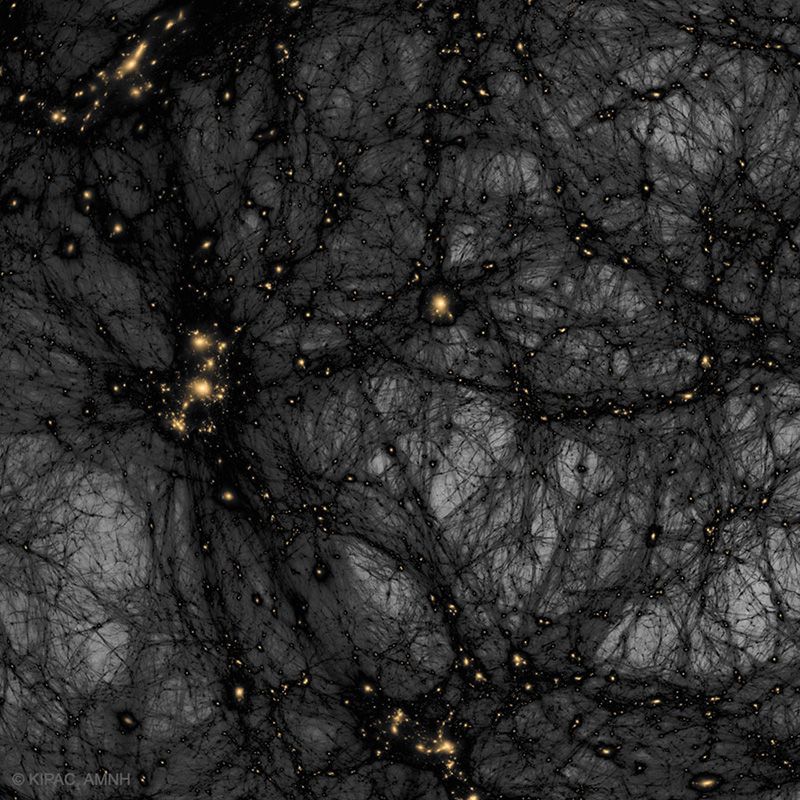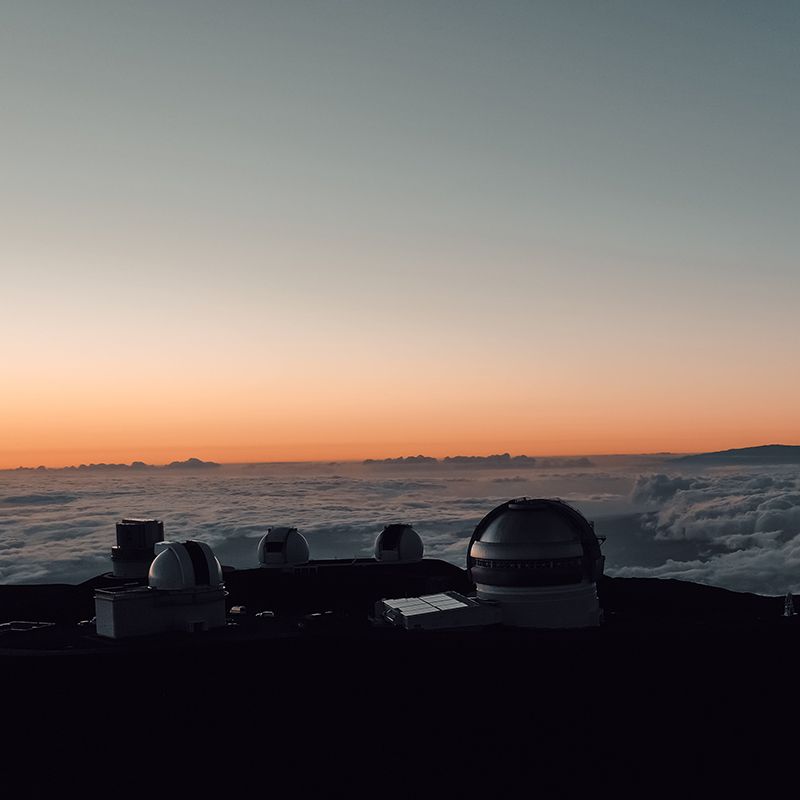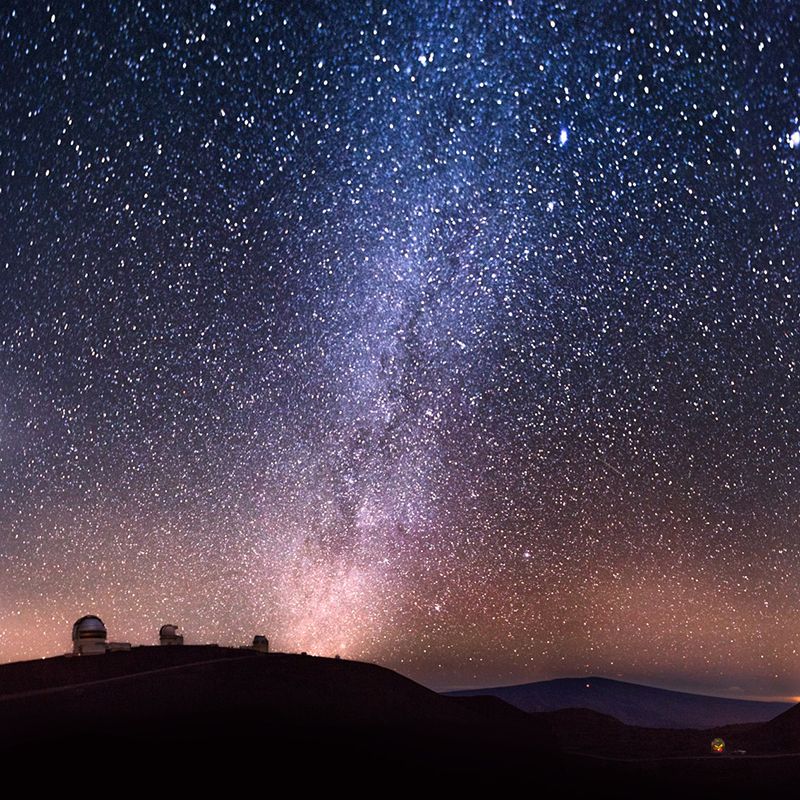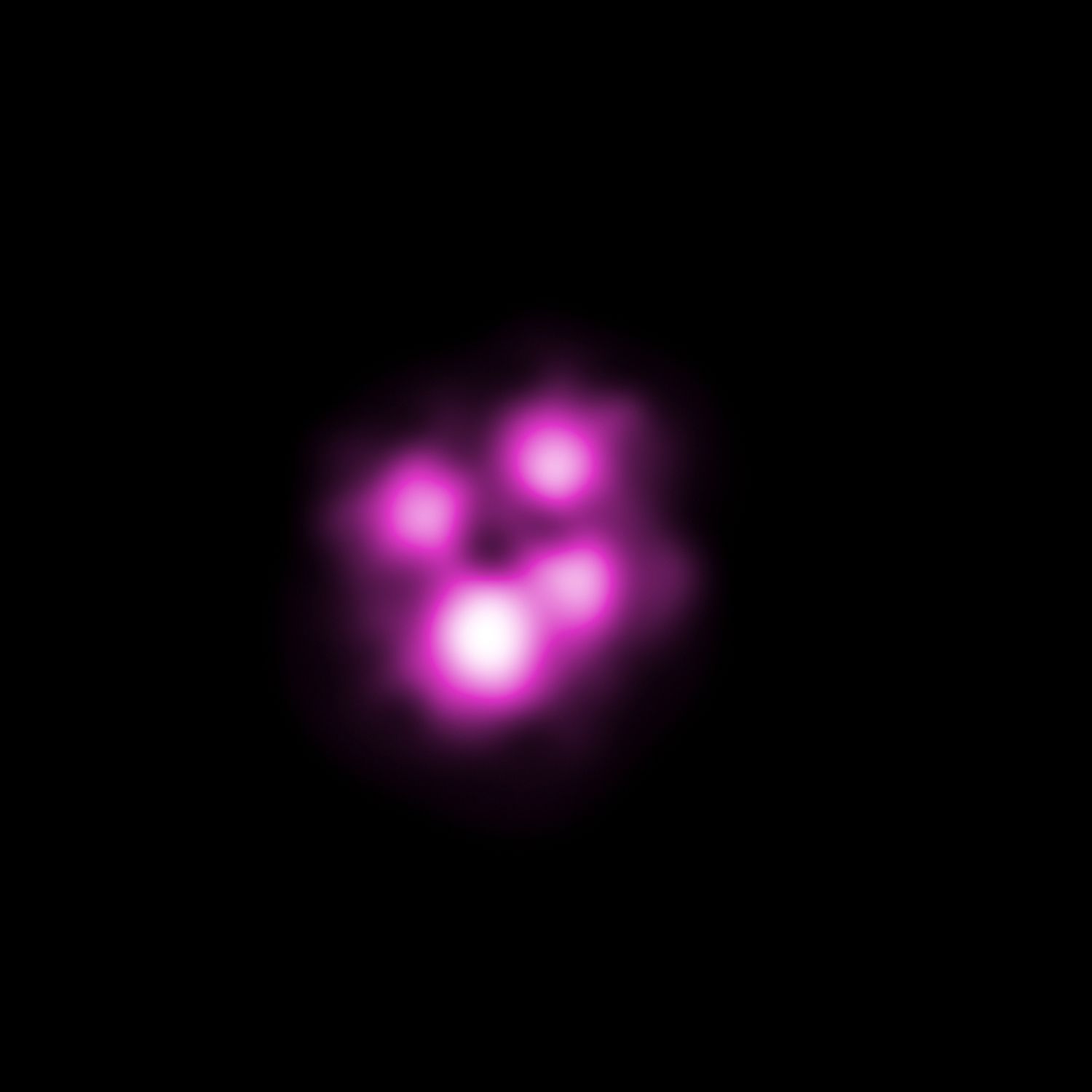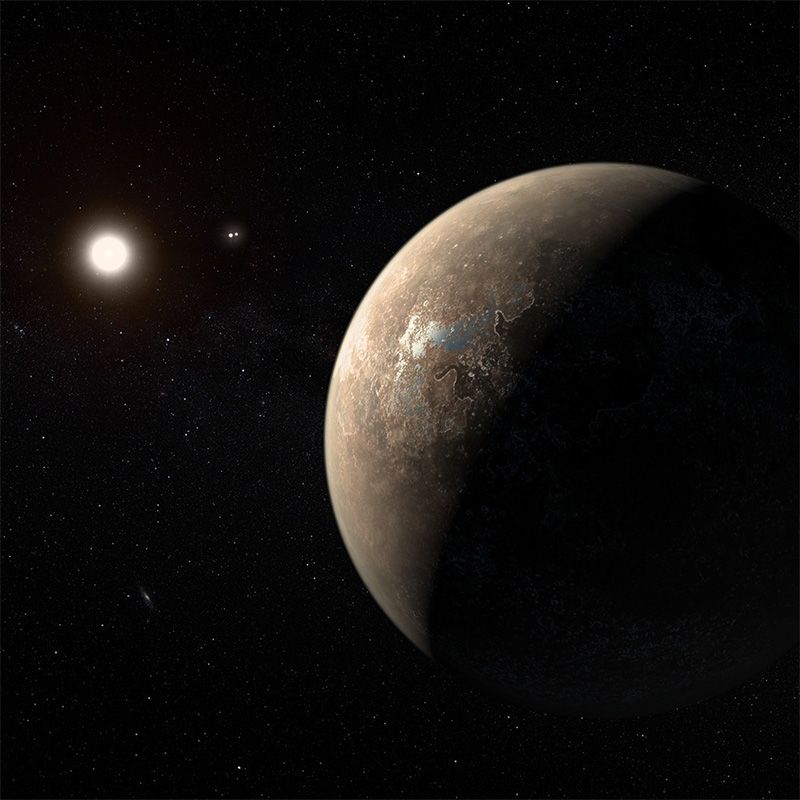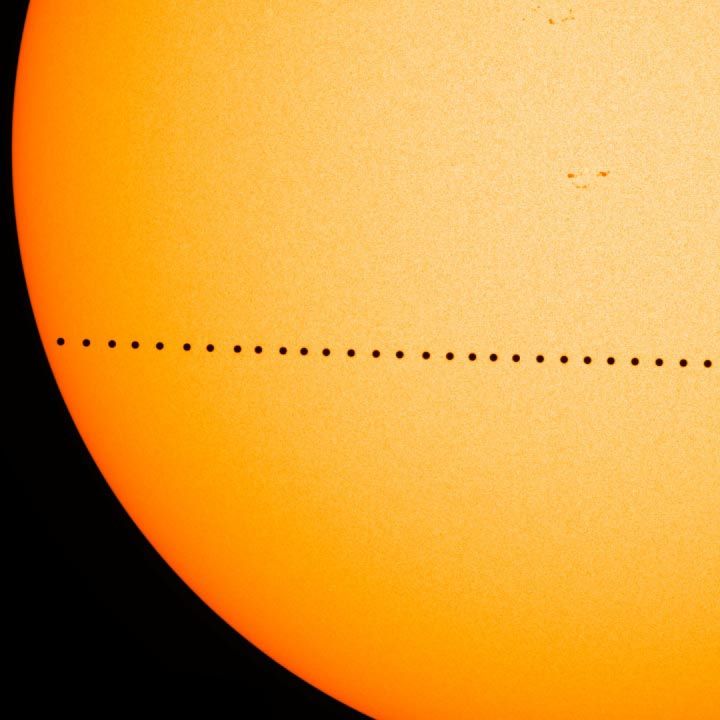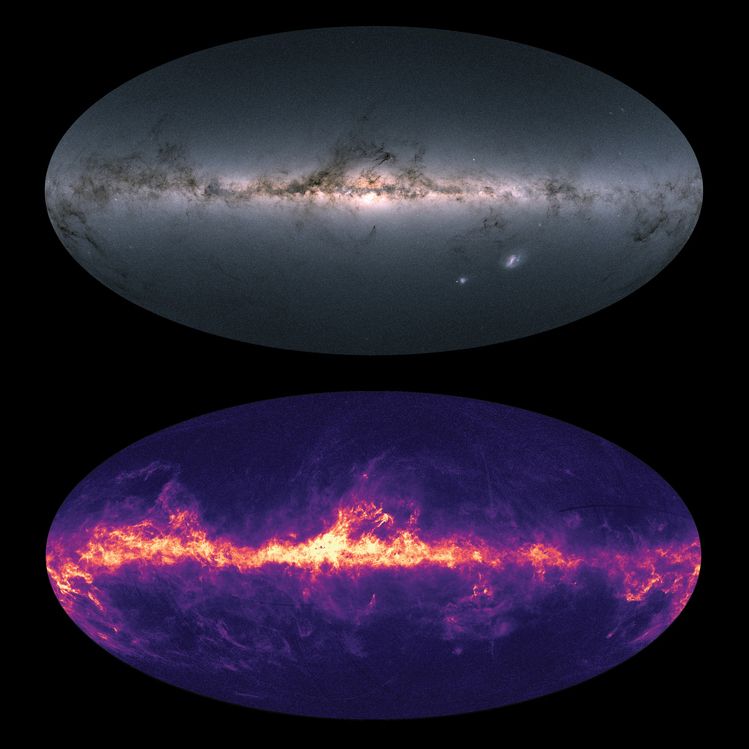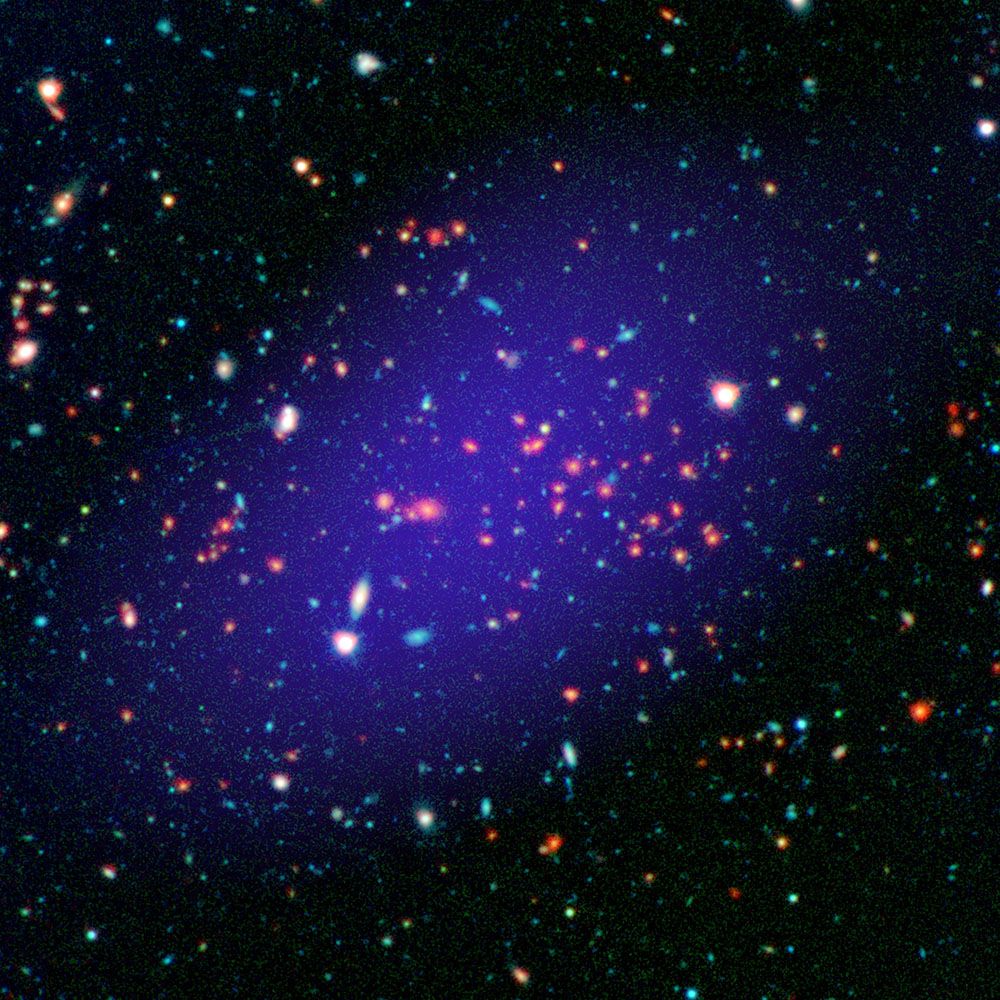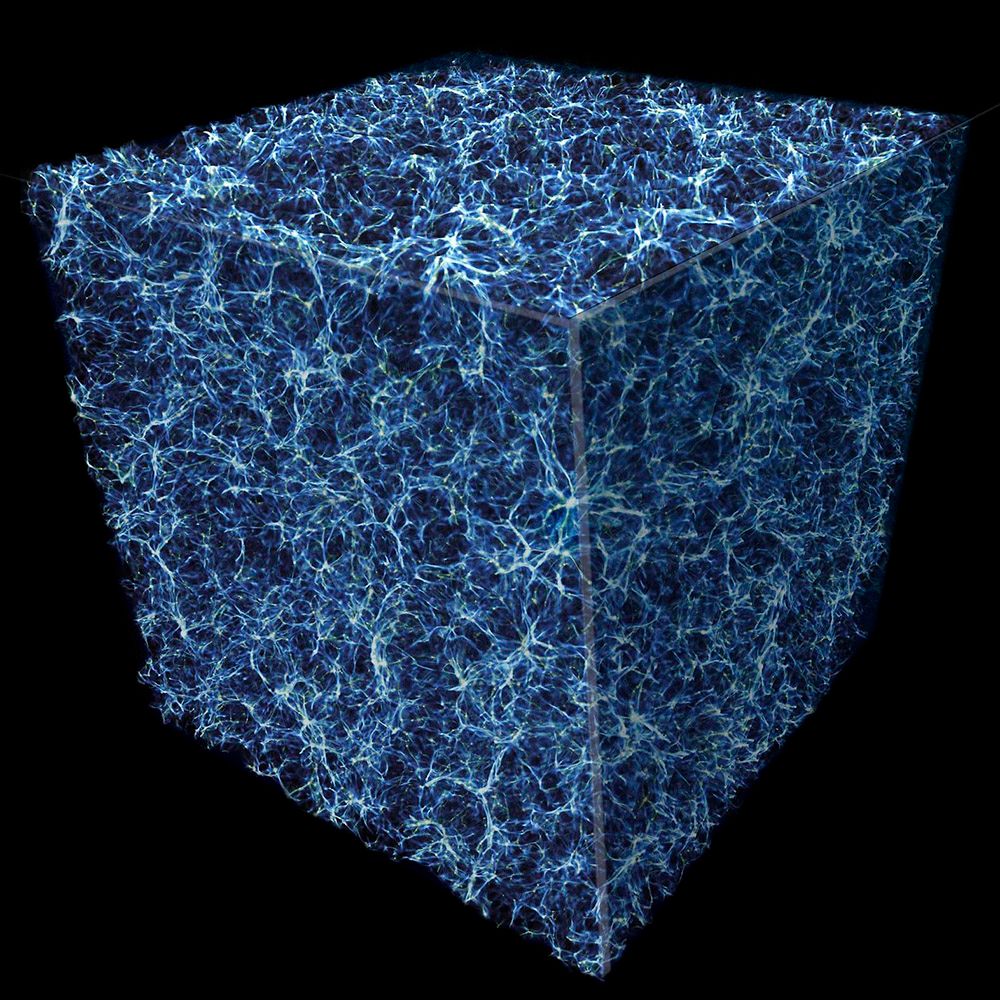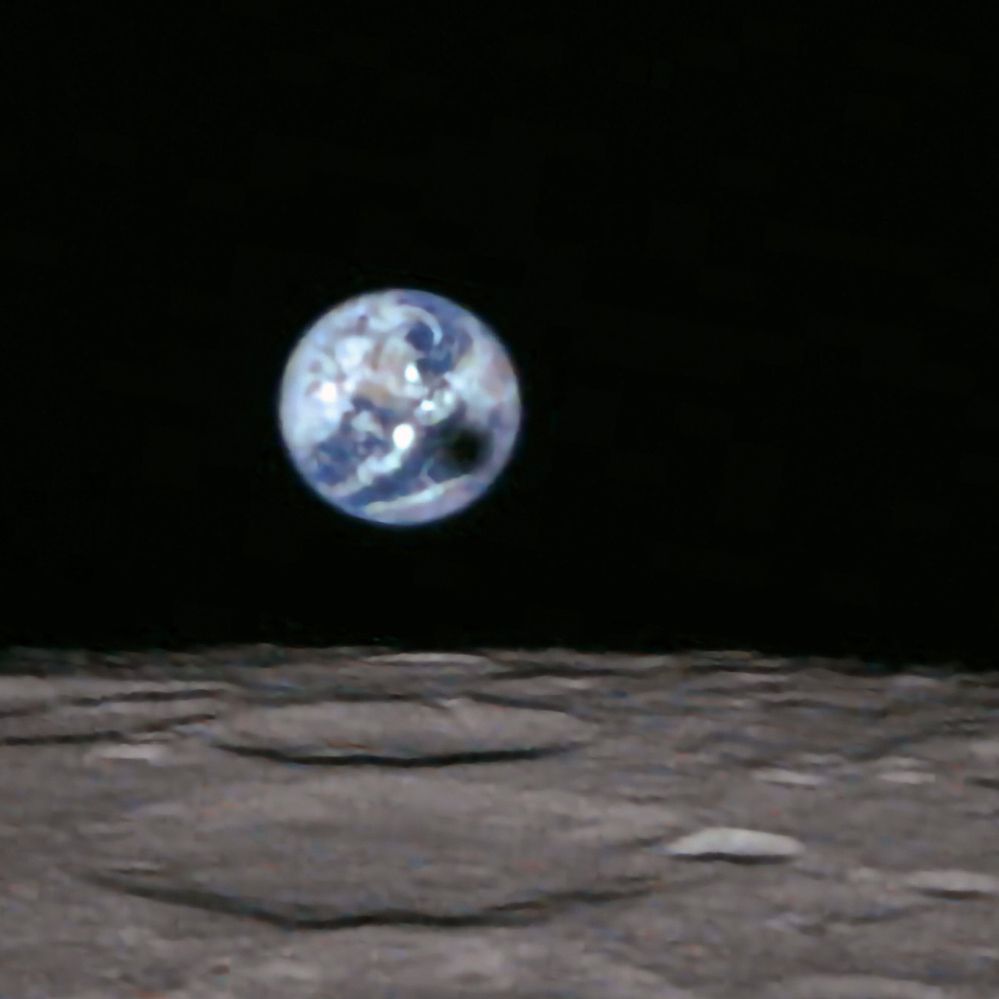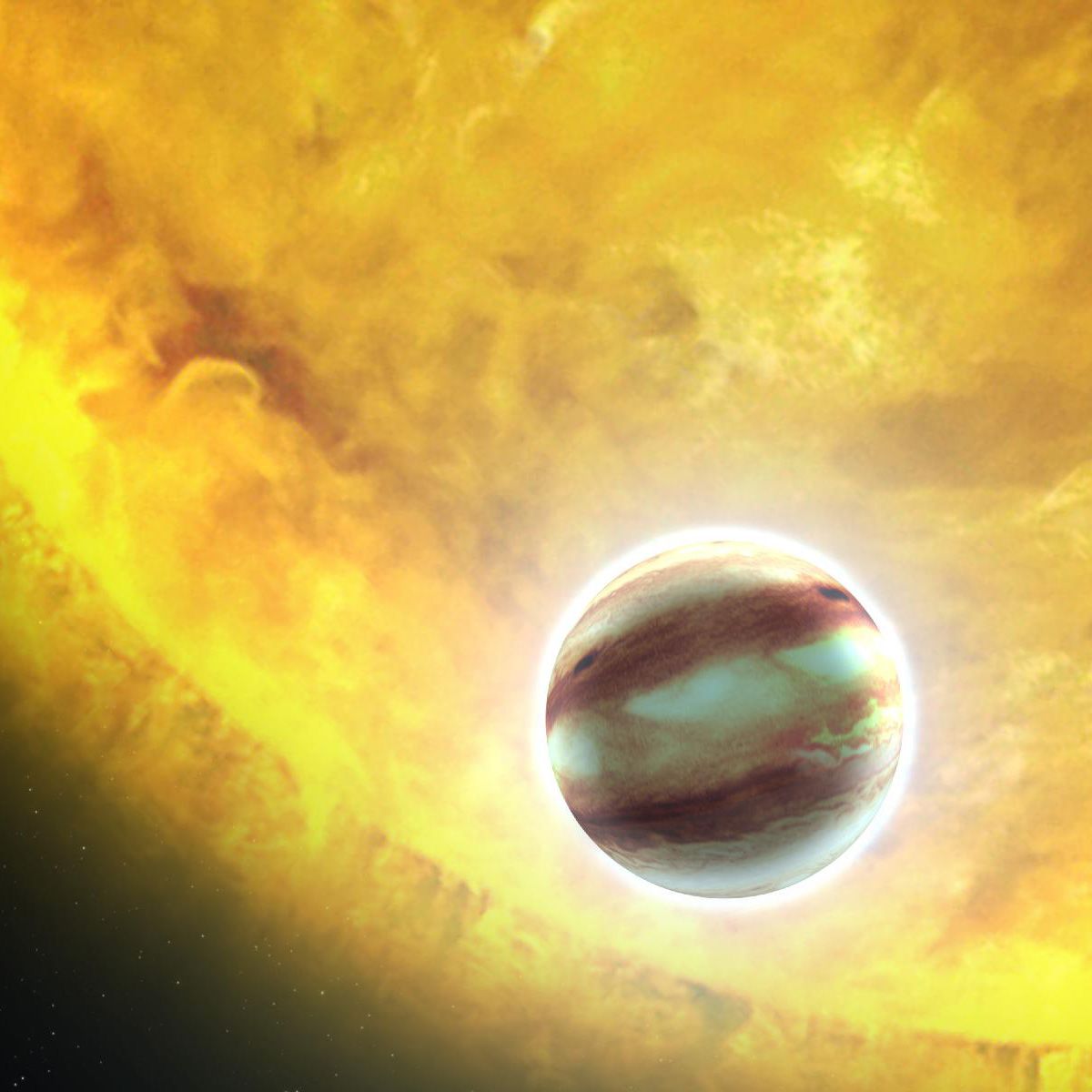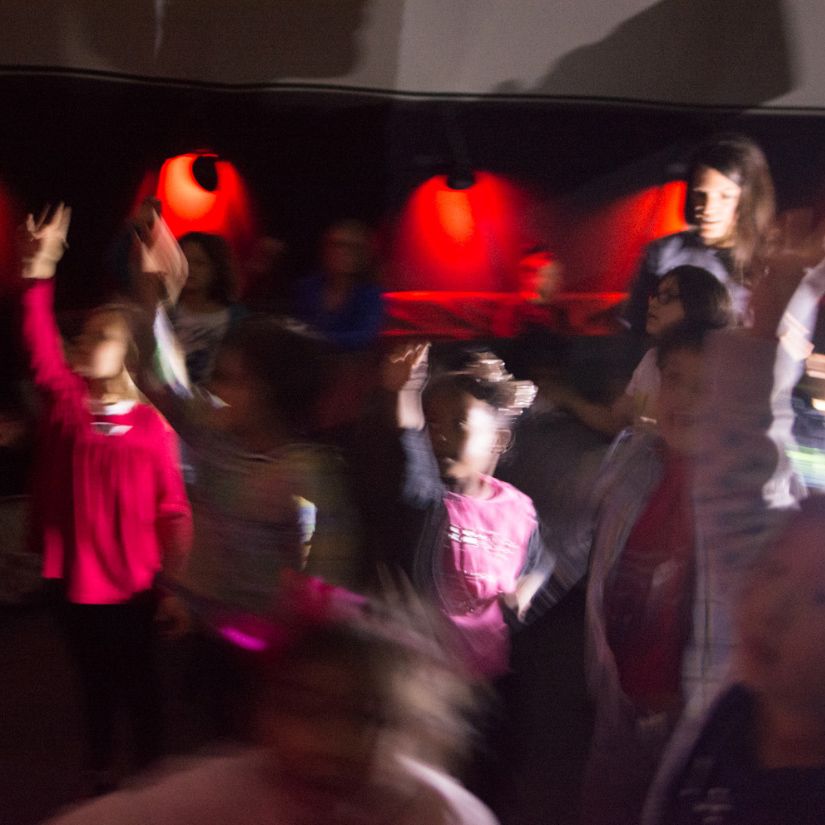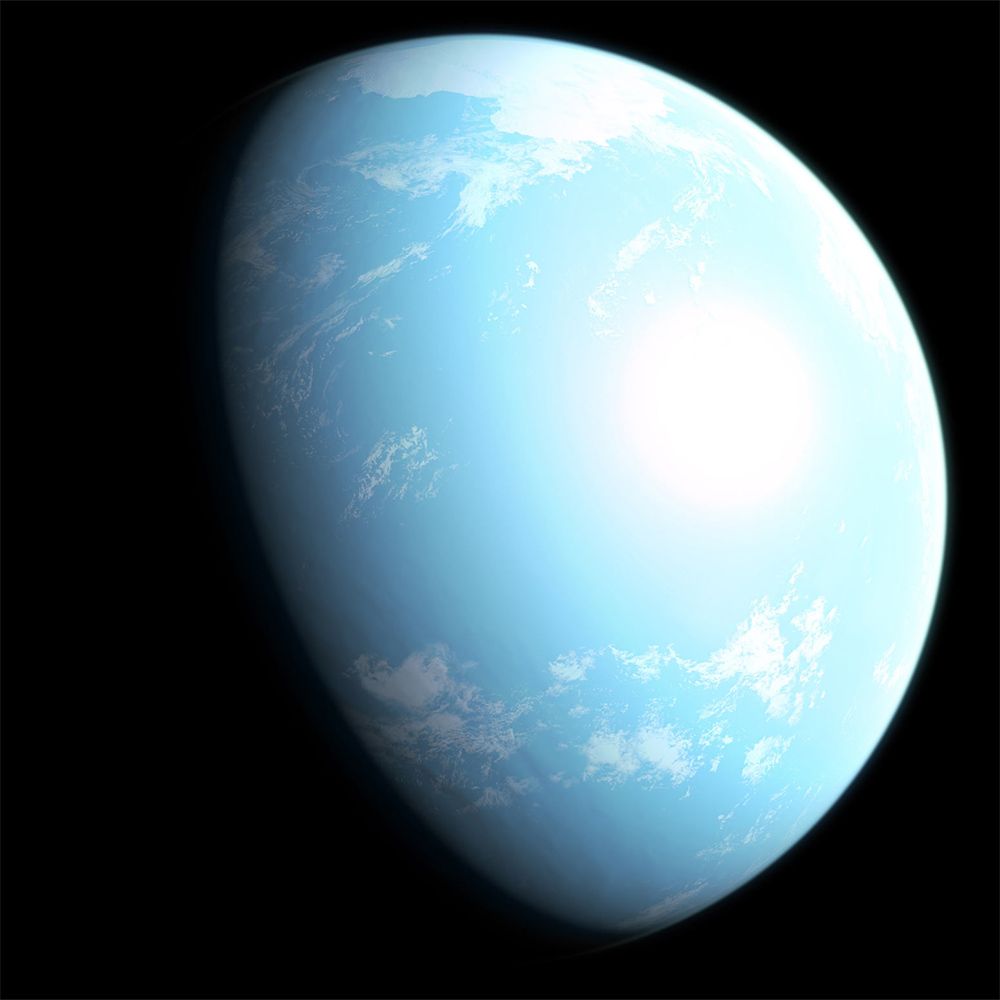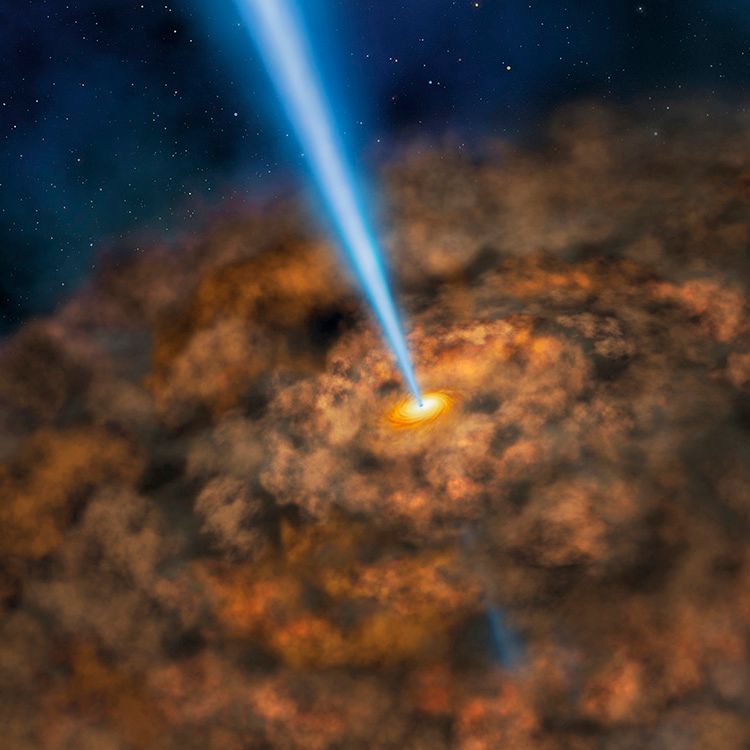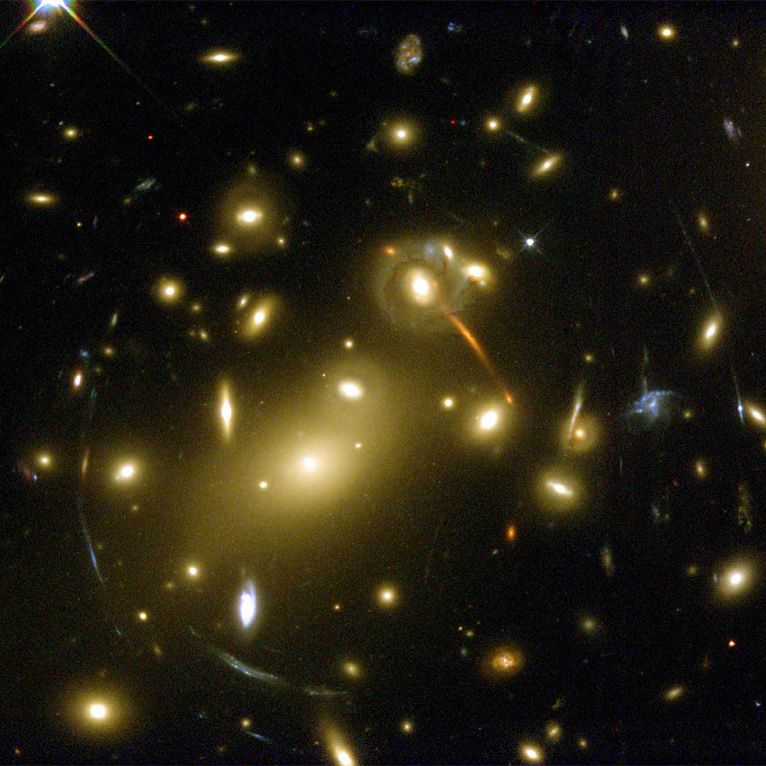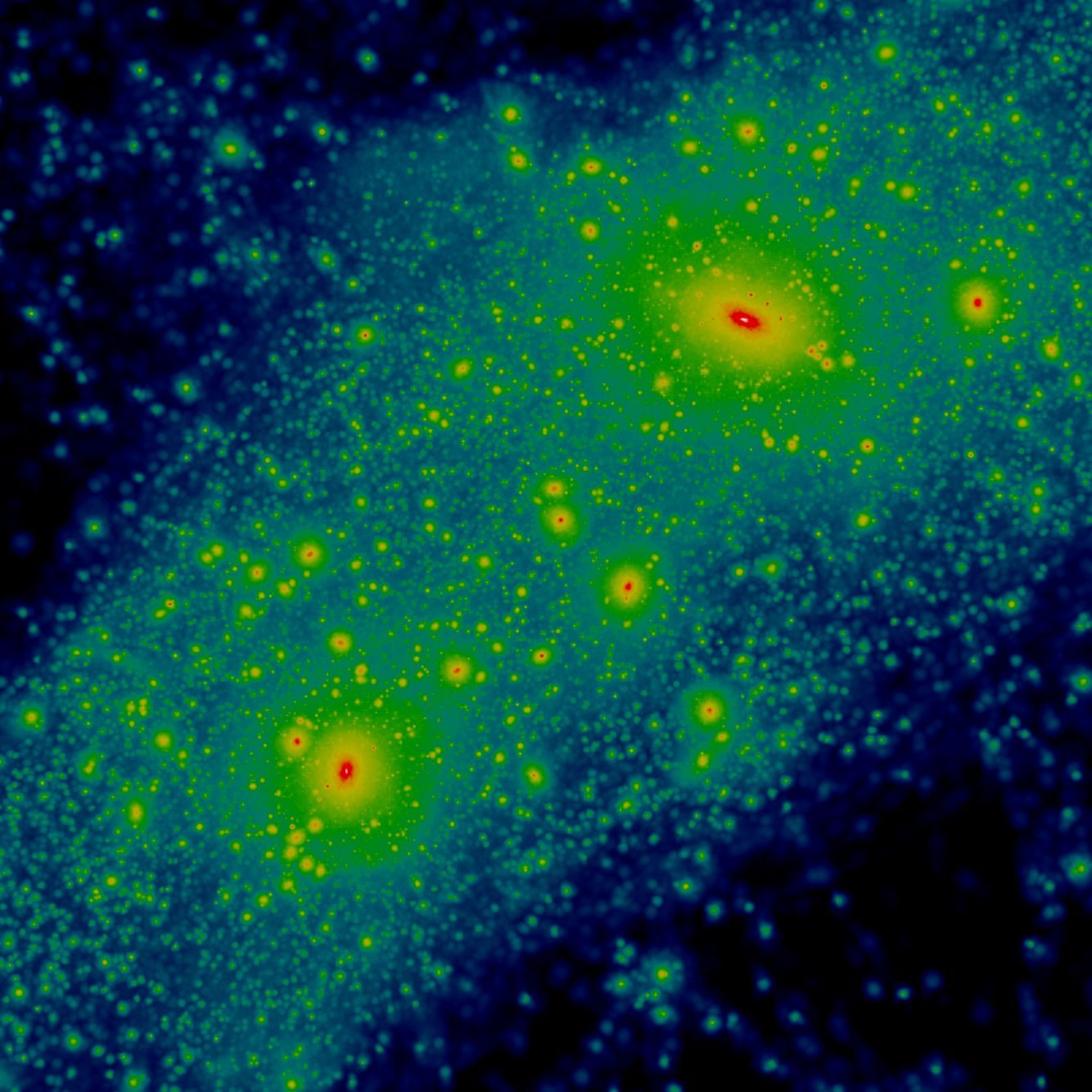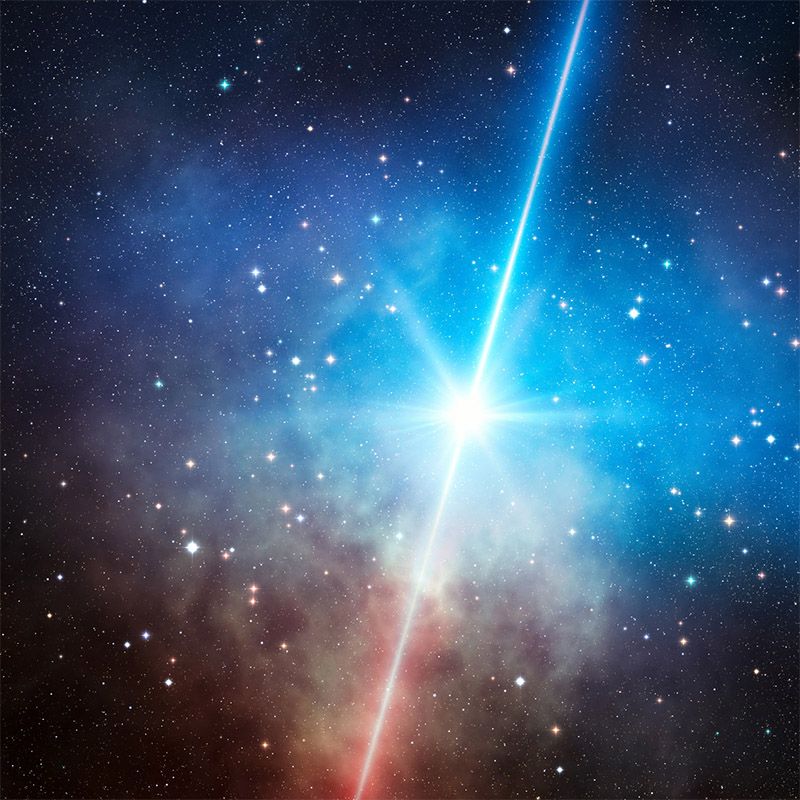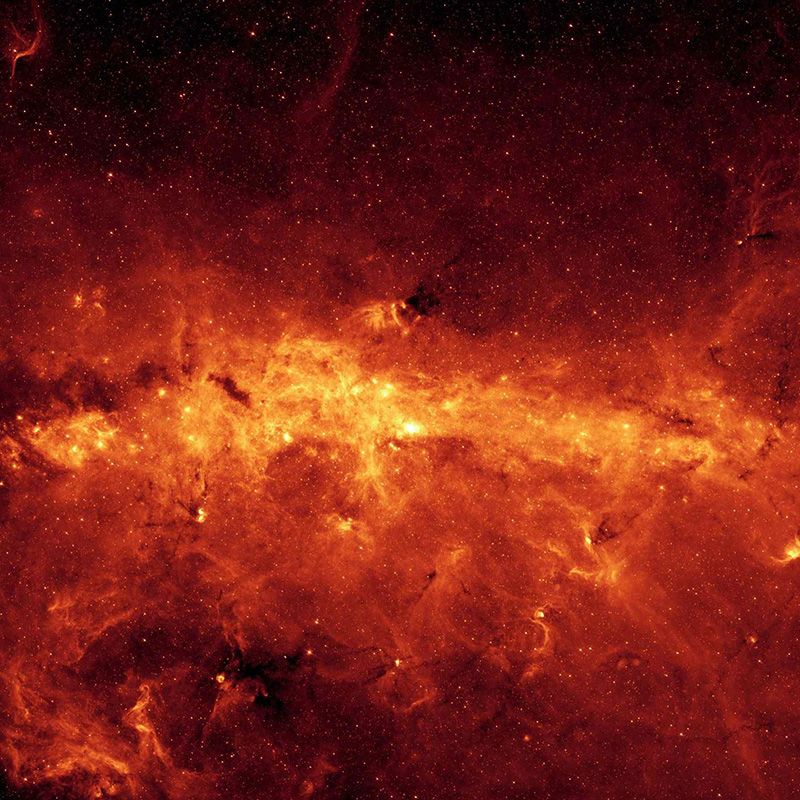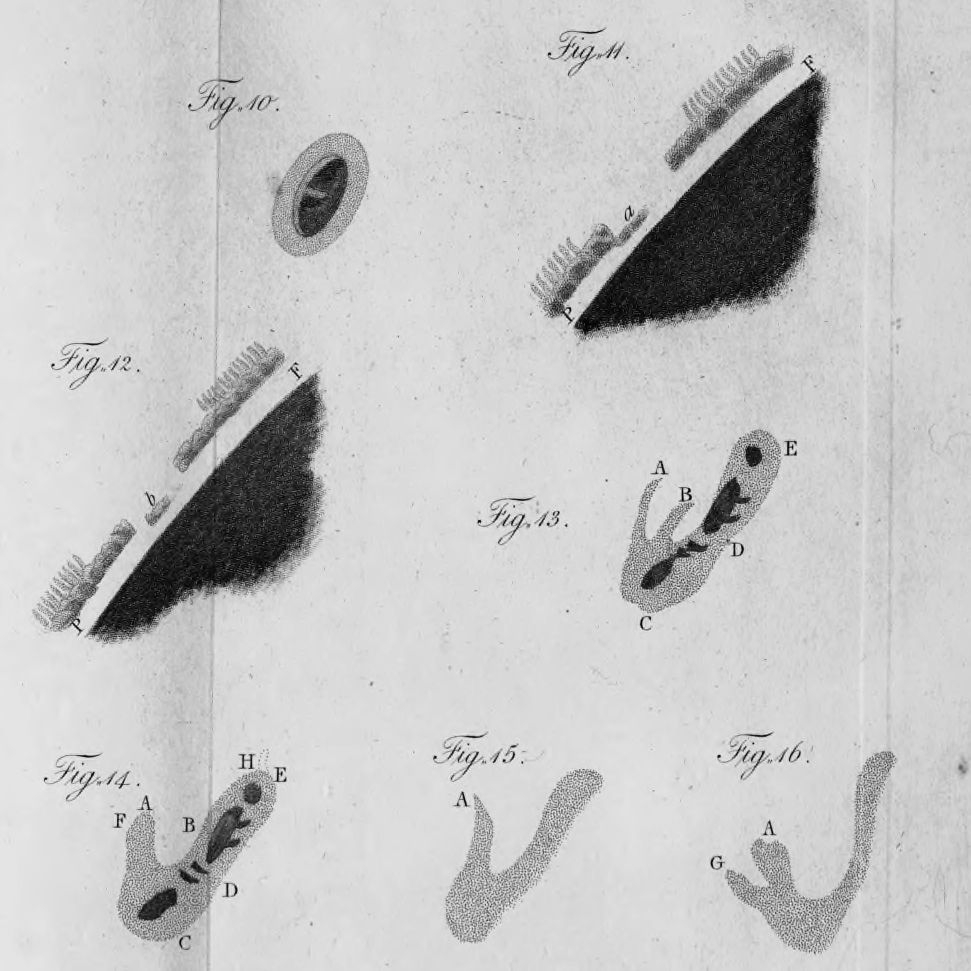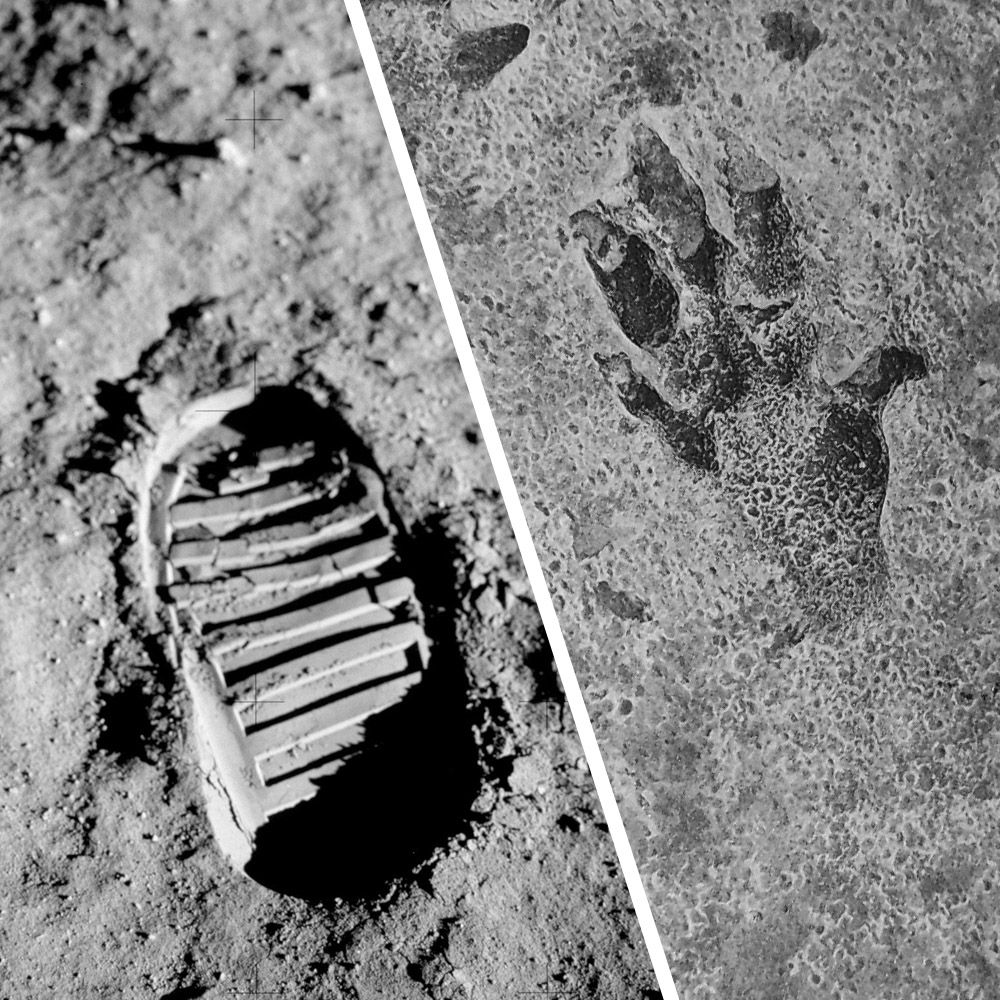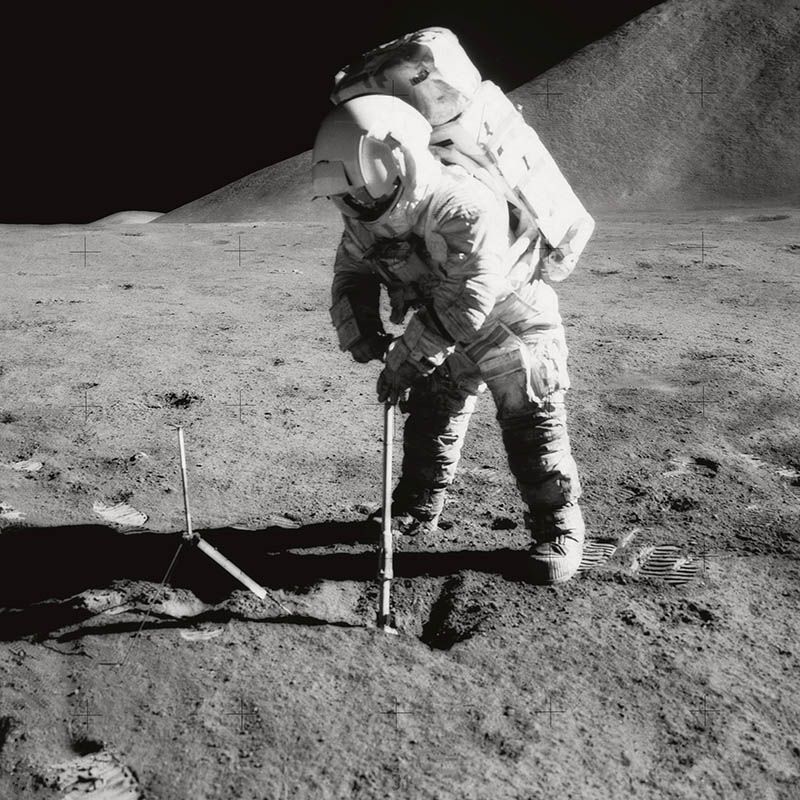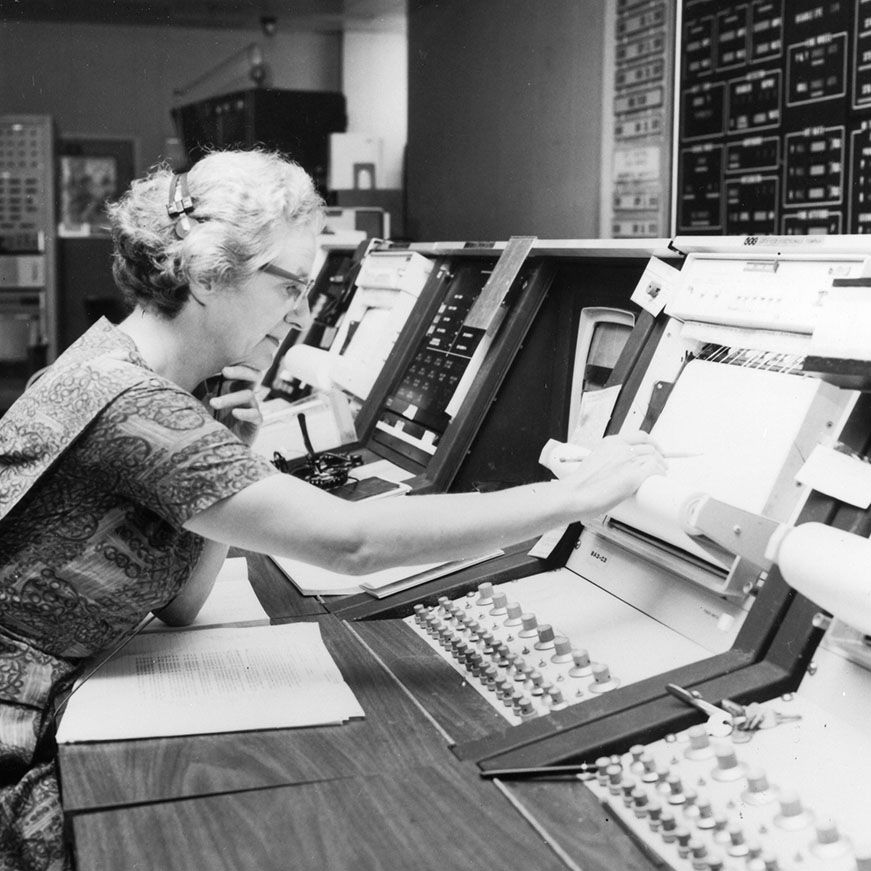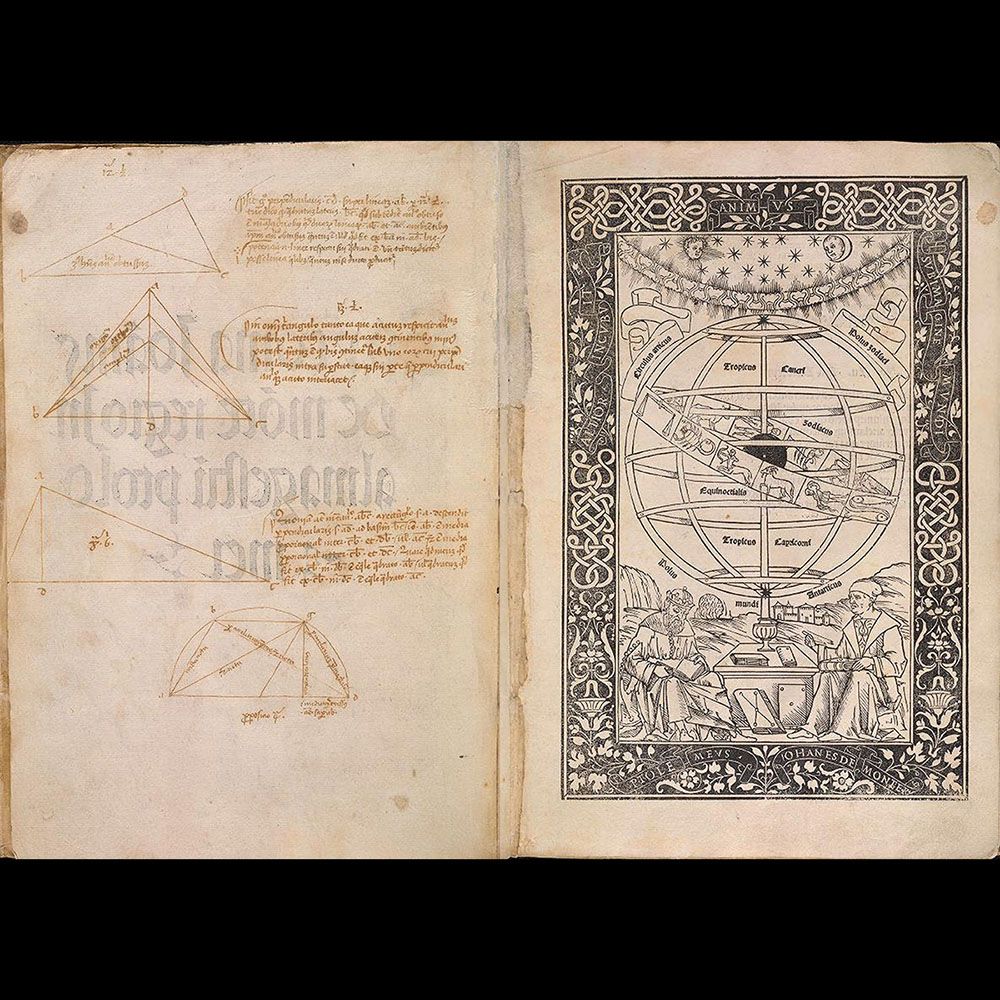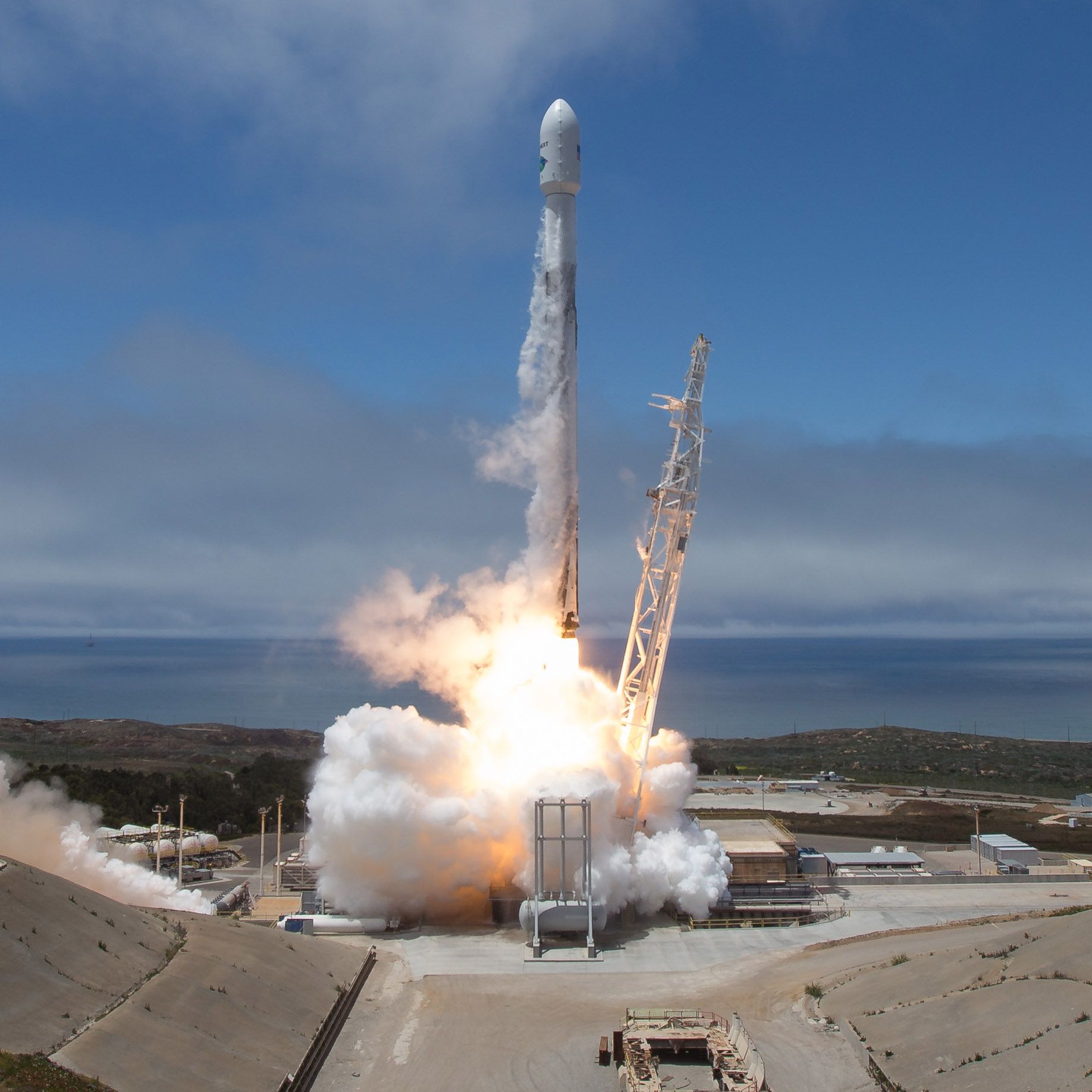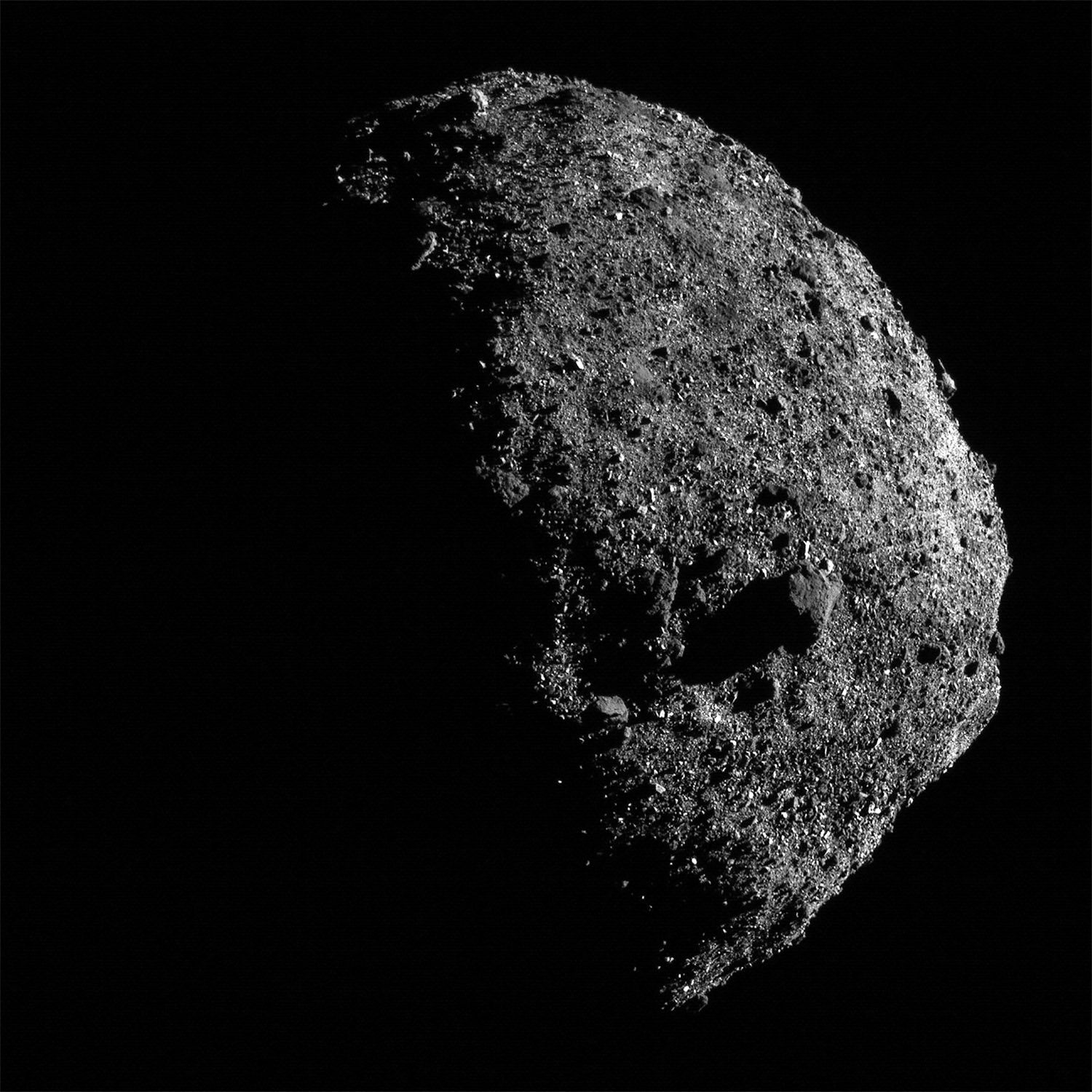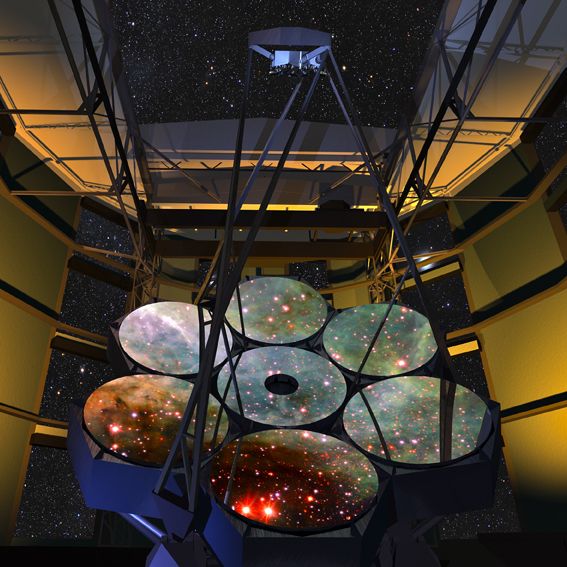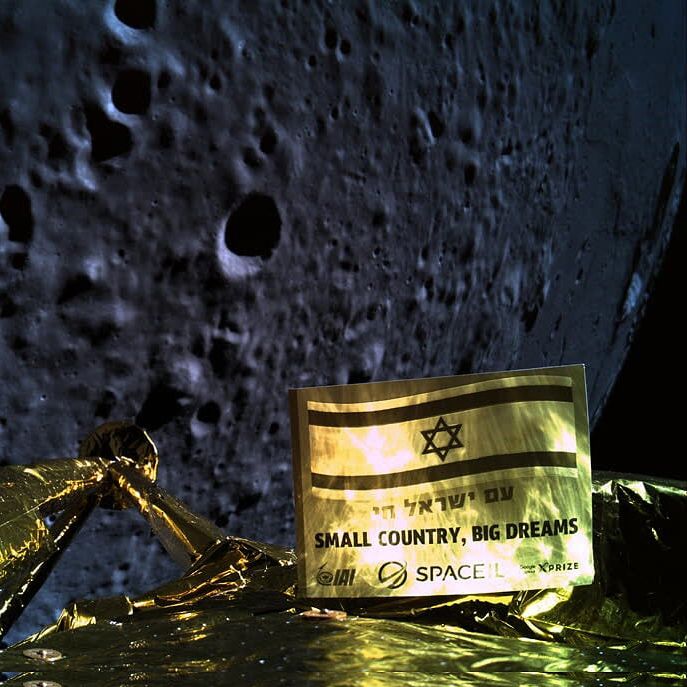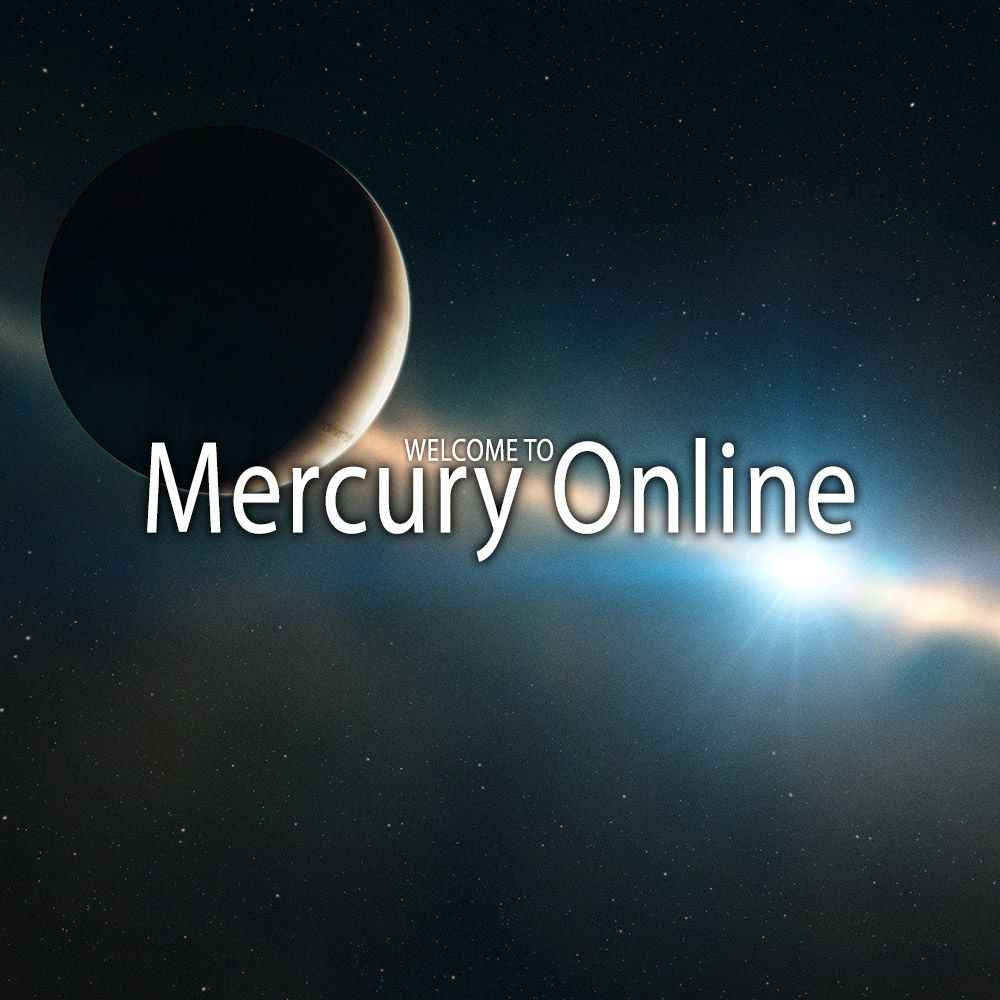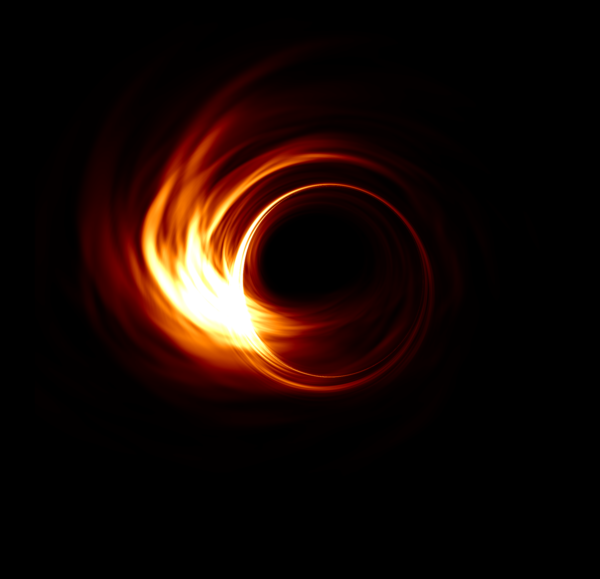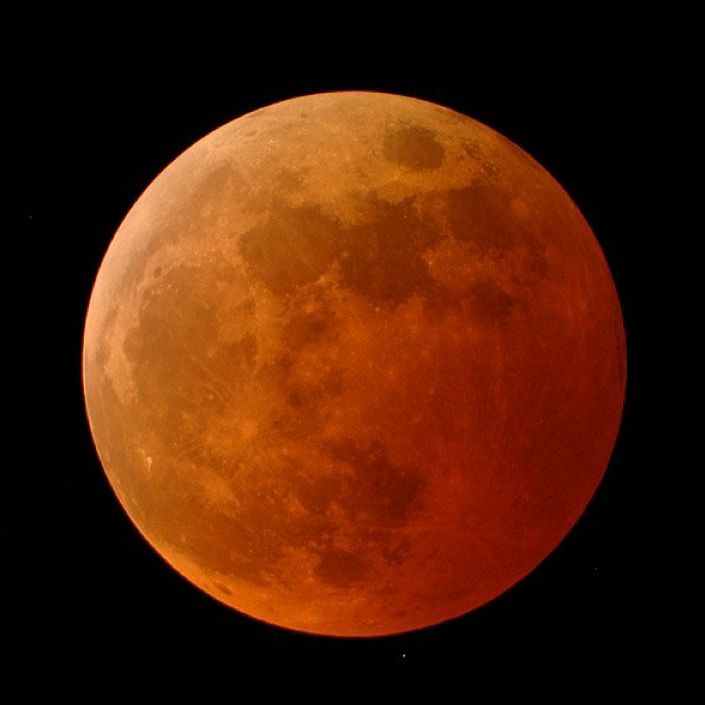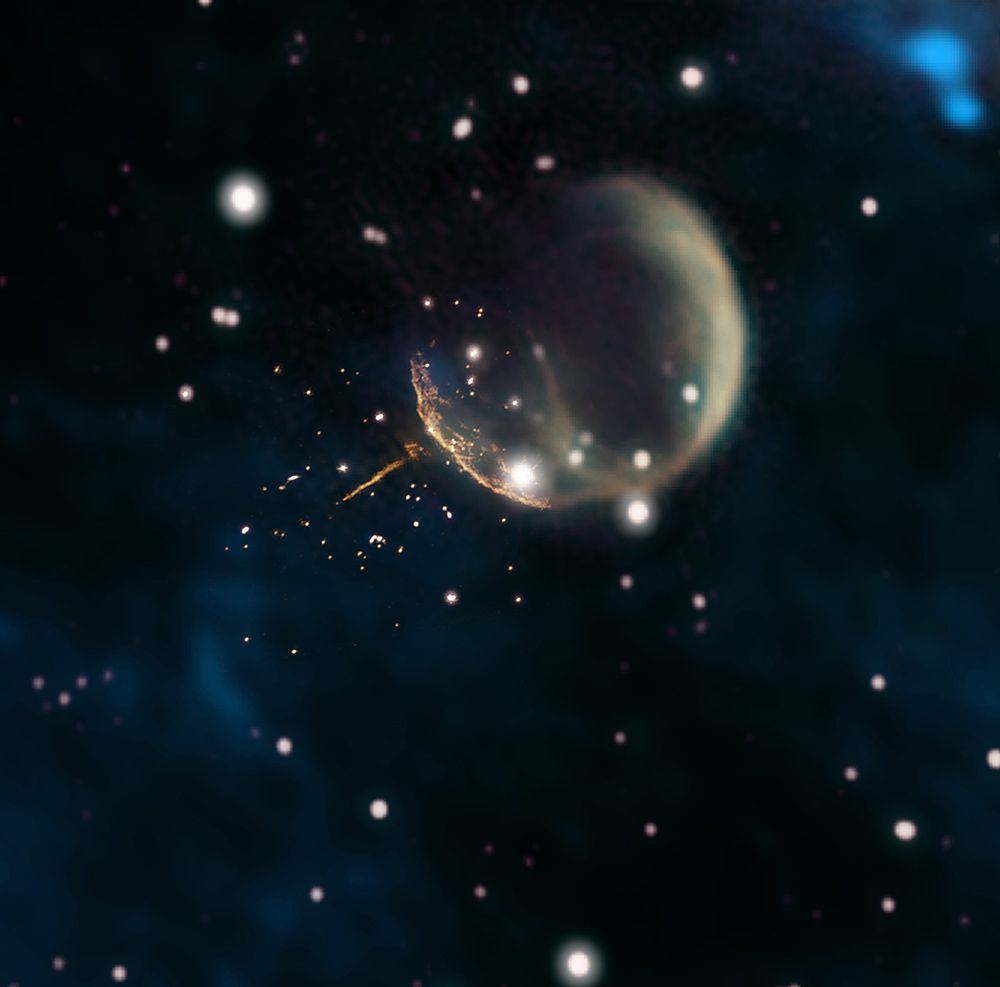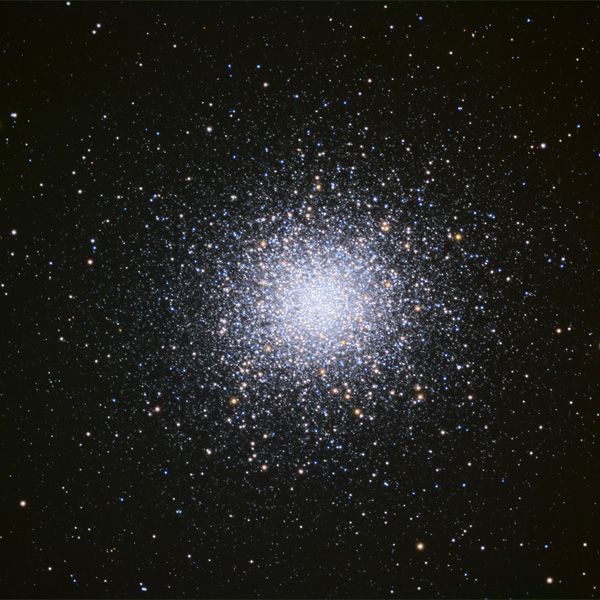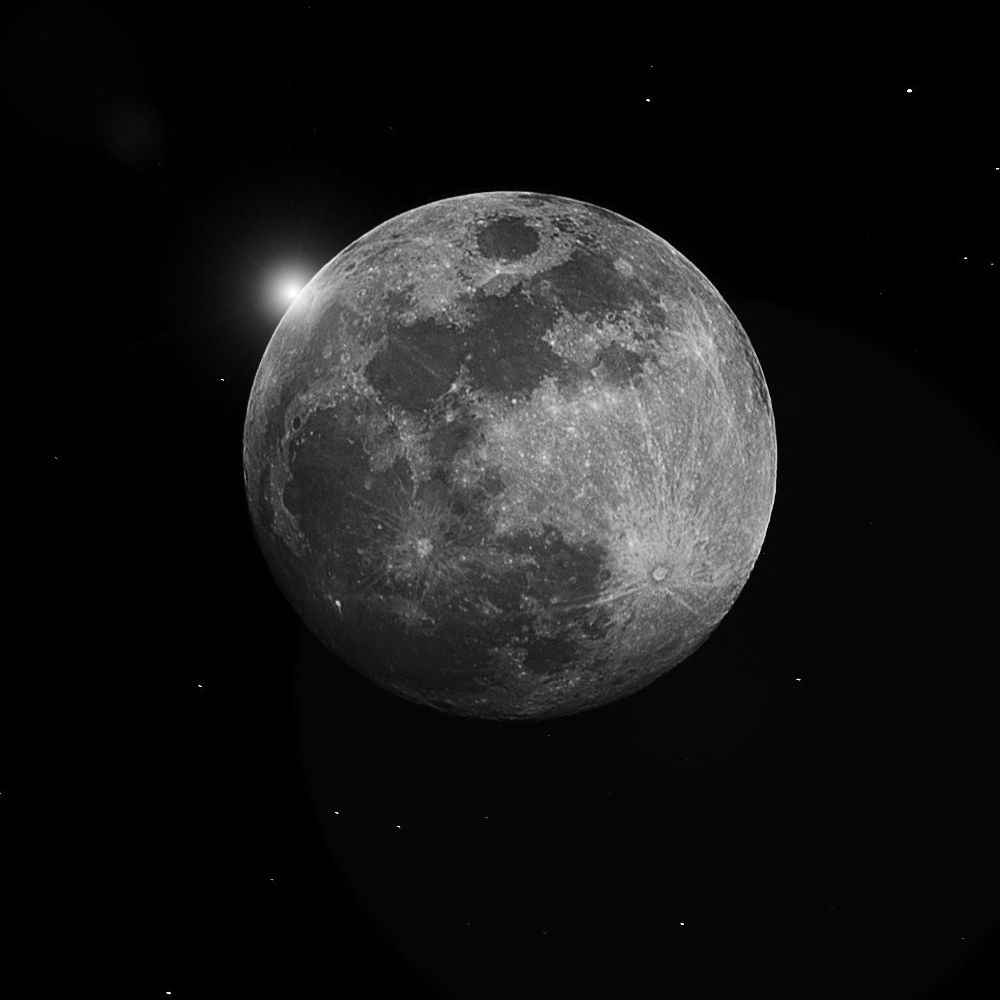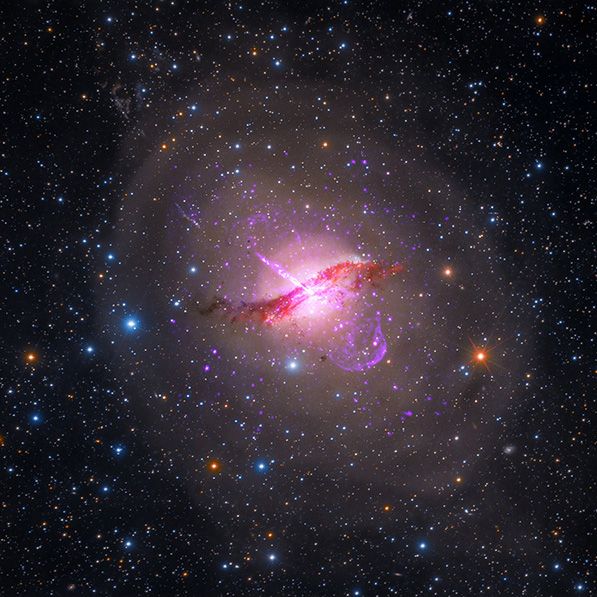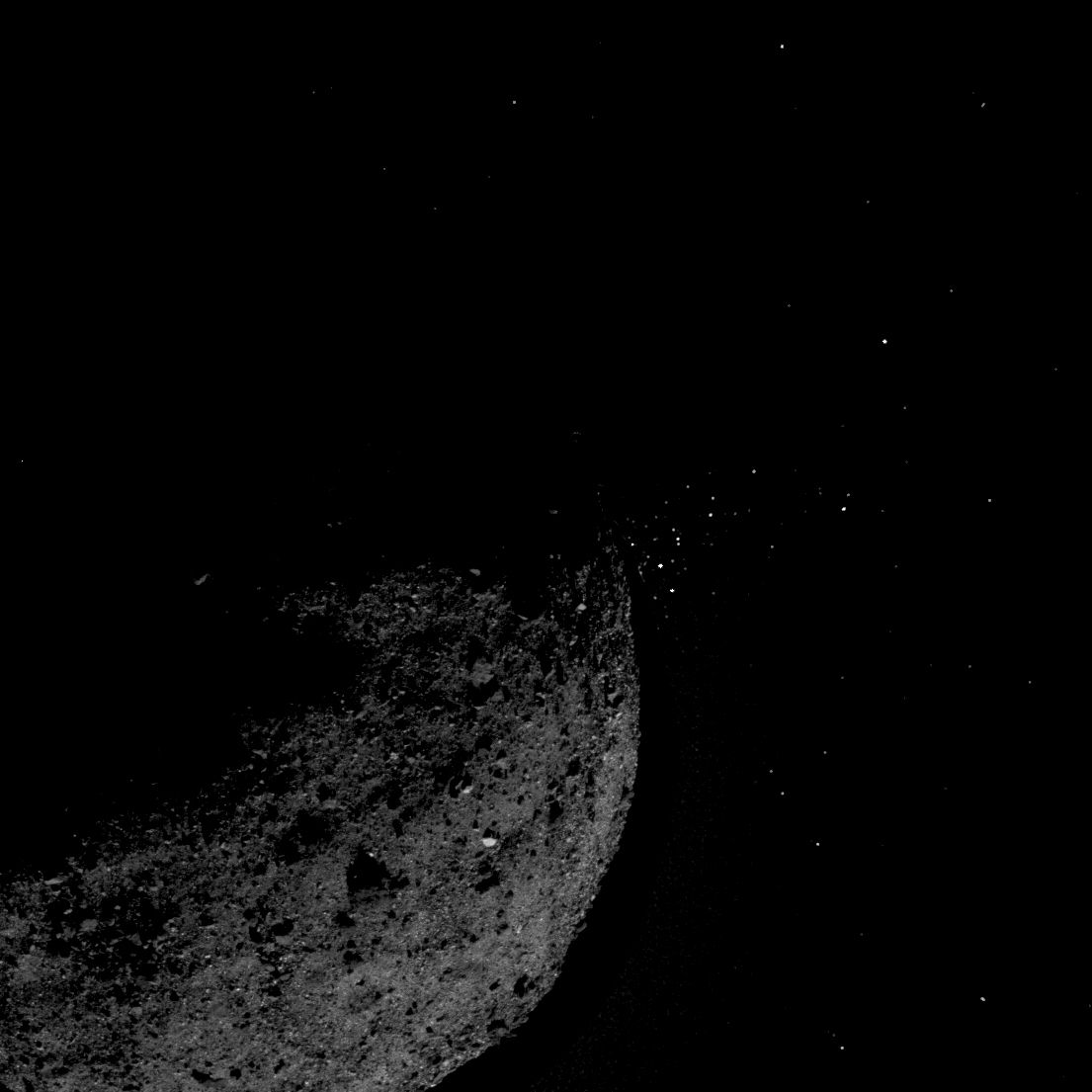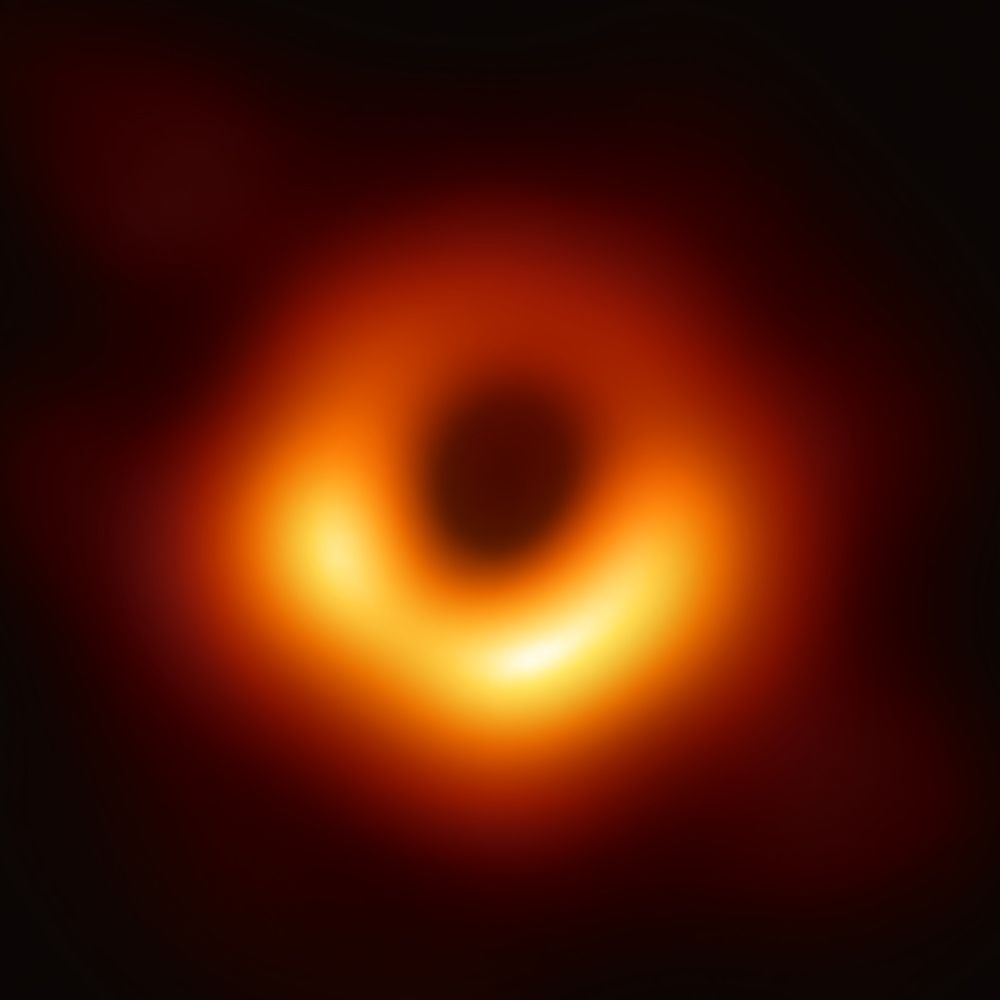Mercury Online
Mercury Online was the companion blog showcasing some of the great content in Mercury, when it was a quarterly magazine and digital PDF magazine for ASP members between 1972 and 2023. Visit the new online-only Mercury now available to all via subscription.
The newest issue of Mercury (Vol. 51 no. 3+4) is available to members, and this double issue features recent spacecraft results, tips for hosting events relating to the upcoming solar eclipses, the intertwined history of amateur astronomy and professional astronomy, news about the long-sought star catalog from ancient observer Hipparchus, and more!
In archival spacecraft data of Venus, planetary scientists found evidence of active volcanic activity.
How can we create student groups that merge naturally into a cohesive whole?
The newest issue of Mercury (Vol. 51 no. 2) is available to members, and this issue features a deepdive into the Event Horizon Telescope's observations of the Milky Way's supermassive black hole, details of the first images from the James Webb Space Telescope, news about several Mars missions, a look at the historical 1638 solstice lunar eclipse, and more!
The James Webb Space Telescope's commissioning observations of Jupiter show how well the telescope can track objects moving quickly across the sky.
Almost as old as Hubble, Chandra needs a follow-up to complement the James Webb Space Telescope.
The Winter 2022 issue of Mercury (Vol. 51 no. 1) is available to members, and this issue features an overview of the James Webb Space Telescope mission, an introduction to CubeSats for science and education, prints from a historic astronomical artist, tips for improving classroom dynamics, and more!
In response to technologies that impede scientists' research and humans' enjoyment of the night sky, the International Astronomical Union (IAU) has established the Centre for the Protection of Dark and Quiet Skies from Satellite Constellation Interference.
This past Saturday, the James Webb Space Telescope successfully deployed its primary mirror's second side panel, marking the end of its extremely complex deployment sequence.
This report “paves the pathway to exploring the cosmos.”
The Perseverance rover has successfully drilled its first Martian core sample and stored said sample in a titanium tube.
In this Medieval year, an emperor, a monk — and several ancient texts — hoped to understand solar eclipses.
An explosive gamma-ray blast detected last year seems to straddle the line between the two known classes of gamma-ray bursts.
A problem in the Hubble Space Telescope's Power Control Unit or a secondary circuit led to the iconic telescope's shutdown last month.
A new study suggests Betelgeuse's "great dimming" was the result of an enormous dust cloud shrouding roughly one quarter of the star’s surface.
The Spring 2021 issue of Mercury (Vol. 50 no. 2) is available to members, and this issue features a new column, the story of black holes, a guide to the Kuiper Belt, astronomy's patron saint, the mysteries of our home galaxy, and more!
A dozen celestial locations in our Milky Way Galaxy boost particles to extreme energies, say astrophysicists.
Apollo 11 astronaut Michael Collins died today from cancer at the age of 90, says his family.
You can contribute to astronomical science with your smartphone!
The Ingenuity rotorcraft sits on the surface of Mars, readying itself for its first test flight.
Imagine if science fiction’s plot tool of intermingling parallel universes mixed our 2020 with another Earth’s.
The Winter 2021 issue of Mercury (Vol. 50 no. 1) is available to members, and this celebratory issue features 50 years of human space exploration, NASA's Great Observatories program to understand the universe, historical solar eclipses, and more!
At 12:55pm Pacific Time, NASA’s Jet Propulsion Laboratory mission control erupted in applause as the Perseverance rover touched down on Mars.
Astronomy likely influenced the Scottish poet Robert Henryson.
The TOI-178 system has a star slightly cooler than the Sun and six exoplanets, where five of them have resonant orbits.
The Autumn 2020 issue of Mercury (Vol. 49 no. 4) is available to members, featuring the first five years of gravitational-wave detections, future observatories designed to catch more of these ripples in space time, ancient Egyptian astronomy, and more!
The smooth findings, ironically enough, may point to cracks in the theory of cosmic expansion
The 1000-foot (305-meter) wide radio dish telescope at Arecibo Observatory in Puerto Rico will be dismantled and decommissioned.
This clumpy, twisted, 5,000 light-year-long relativistic jet blasts into space from the supermassive black hole inside the elliptical galaxy Messier 87.
Take time to remind yourself of the familiar constellations and enjoy the moments of celestial splendor.
Recently, astronomers were able to observe in real time as a star wandered too close to a black hole and became an unwitting meal, undergoing “spaghettification” in the process.
At about 6:10 pm Eastern today, a NASA spacecraft will touch an asteroid, grab a 2-ounce sample of debris, and hold onto it until a return to Earth. At least, that’s the plan of this first attempt at the OSIRIS-REx mission’s complex series of events.
The COVID-19 pandemic has forced educators to change their teaching style.
The Summer 2020 issue of Mercury (Vol. 49 no. 3) is available to members, featuring discoveries from the Gaia spacecraft, news about the brightest Northern Hemisphere comet in decades, a poet's exploration of the Solar System, and more!
Because of its data collection and archival system, the Hubble Space Telescope has changed how — and who — can do science.
Astronomers have found signs of a molecule in the atmosphere of Venus, one that, on Earth, only microbes can create in large amounts.
The medieval conjunction of Saturn and Jupiter was blamed for a plethora of events, including the greatest catastrophe to befall Europe.
NASA’s TESS spacecraft has completed its primary two-year mission and discovered 66 exoplanets and another 2,000 candidates.
Learn about Edwin Hubble, the namesake of the workhorse space telescope.
A 3-inch-diameter support cable at the Arecibo Observatory snapped and tore a 100-foot-long gash in the observatory dish.
Two recent studies used data from the Mercury MESSENGER mission's flybys of Venus to reveal new details about the Venusian atmosphere.
You may have heard about globular clusters and open clusters, but nuclear star clusters are quickly garnering serious attention.
Astronomy has been abuzz with observations of a unaided-eye comet in the early morning hours. Comet C/2020 F3 NEOWISE is the brightest comet that’s shown up in the skies in years.
The Spring 2020 issue of Mercury (Vol. 49 no. 2) is available to members, featuring the people behind the Hubble Space Telescope, how Hubble data has changed astronomy, how teachers are responding to COVID-19, and more.
A quartet of space probes is heading to Mars soon looking to answer lots of new questions — and an old one.
I’m thrilled to be the new Editor of both Mercury (the magazine) and Mercury Online (the blog companion).
Anthropomorphizing robotic space missions via social media can help students better connect with their understanding of the solar system.
Light pollution and satellite constellations not only jeopardize the future of astronomy.
The Winter 2020 issue (vol. 49 no. 1) of Mercury magazine is online for ASP members, featuring a goodbye to Spitzer, kicking off a busy decade for Mars, and paying tribute to Katherine Johnson.
Astronomers have discovered that our galaxy’s supermassive black hole is a track and field superstar.
You’ll never watch “Finding Nemo” in the same way again.
When thoughtful scientific examination sets the historic record straight.
Earthshine: A tool to study Earth’s albedo and (possibly) permanently shadowed lunar features.
How can our thirst for knowledge better serve all of humanity?
The tale of two searches for dark matter and how we might really be closing in on the source of the mystery.
From the classroom to the summit of Maunakea, the appreciation of different perspectives can bridge cultural divides.
During a recent trip to Hawai’i, I spoke with Keck Observatory’s chief scientist to find out how the Thirty Meter Telescope dispute has affected operations.
As protests continue to stall construction of the Thirty Meter Telescope on Hawaii’s Maunakea, where do we go from here?
The ASP is committed to promoting inclusion in astronomy, so this is an opportunity for the Society to shine a light on the growing Thirty Meter Telescope (TMT) controversy.
NASA's Chandra X-ray Observatory reveals the relativistic engine driving the quadruple apparition.
A search in X-rays suggests life might be possible around two of our three neighboring stars.
Observations of this relatively rare phenomenon offers both scientific and educational opportunities.
Tasked with mapping the motions of stars in our galaxy, the European mission is doing so much more.
When humans age, environmental factors can play a huge role in our health—the same is apparently true for galaxies.
In cosmology, Buddha strikes again.
A Chinese satellite got a historic view of the July 2 total solar eclipse from BEYOND Moon orbit.
What do you call an orphaned moon with planetary ambitions?
To avoid the eighth-circle-of-hell tedium of grading, lean on your students’ collaborative creativity and have some fun.
Formal and informal learning have their pros and cons, but the ASP is at the intersection working to get the best out of both.
Another day, another "habitable" exoplanet discovery—and more headlines suggesting that aliens live there.
Feedback from active galactic nuclei may influence a galaxy’s ability to form stars.
Despite decades of searching for dark matter, we’ve come up empty handed. So, what is the alternative?
Galaxies live inside dark matter halo “houses”—but there seems to be a lot of empty homes out there.
That’s some cosmic trick, but is it done with mirrors?
Some galaxies are extremely massive, compact and filled with dust—how they became so extreme remains a mystery.
Before we had high-resolution observations of the Sun, explanations for sunspots ranged from the ridiculous to the sublime.
If humanity disappeared tomorrow, in 65 million years' time, very little evidence would be left of our nature to explore and understand the universe.
Lunar rocks retain a million-year record of solar energetic particles and galactic cosmic rays.
Without her, the Hubble Space Telescope may not have gotten off the ground.
Computing celestial alignments may be routine today, but for medieval astronomers it was a major undertaking.
How a mission designed to monitor climate change is also a prototype for a technique to detect gravitational waves. [Feature excerpt]
NASA's OSIRIS-REx gets a beautiful crescent view of the asteroid, revealing the incredible array of rocks on its surface.
It’s important for every learner to see themselves reflected in the ongoing exploration of the universe.
On April 11, Israel’s dreams of landing its first spacecraft on the Moon ended after Beresheet crashed into the lunar surface—but it wasn't a failure, not by a long shot. [Feature excerpt]
Welcome to Mercury magazine’s new online destination: Mercury Online!
A cautionary tale about never underestimating a class full of Astro101 students.
The collaboration’s first image has given us a glimpse of what the future of event horizon studies may look like.
Lunar eclipses can help us understand meteoroid impacts and exoplanet atmospheres.
What’s careening through the galaxy at 2.5 million miles per hour and screaming with gamma-rays?
There are some strange similarities between ultra-faint dwarf galaxies and globular clusters—with dark matter anchoring both.
How the event helped a 14th Century astronomer reconnect with Ptolemy’s era.
How supermassive black holes and galaxies evolve together is one of the biggest questions hanging over modern astrophysics.
After arriving at Bennu on December 31, mission scientists with NASA’s OSIRIS-REx quickly realized their spacecraft was orbiting a different kind of asteroid.
After decades of wondering, the Event Horizon Telescope has revealed what a black hole really looks like. [Feature excerpt]

